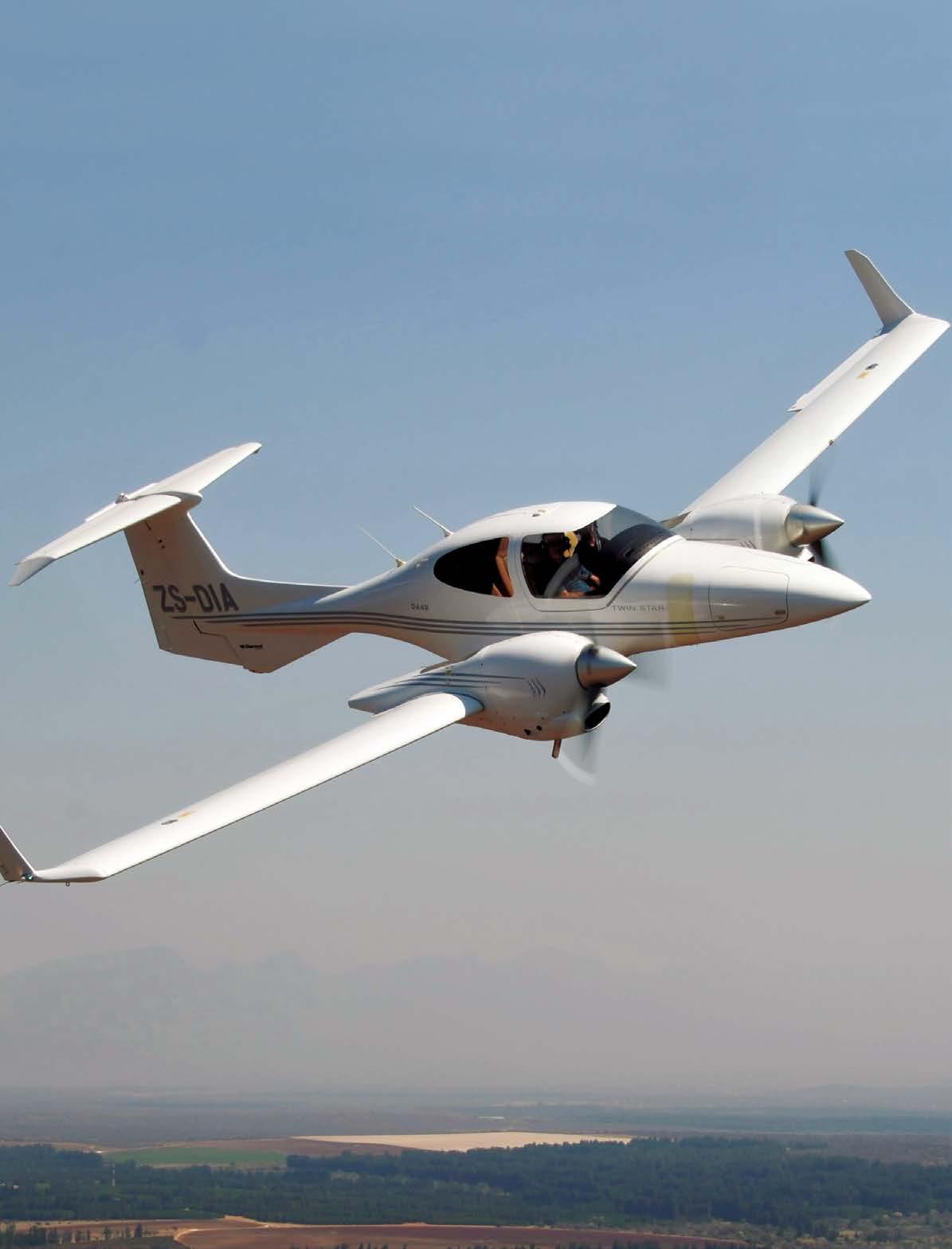
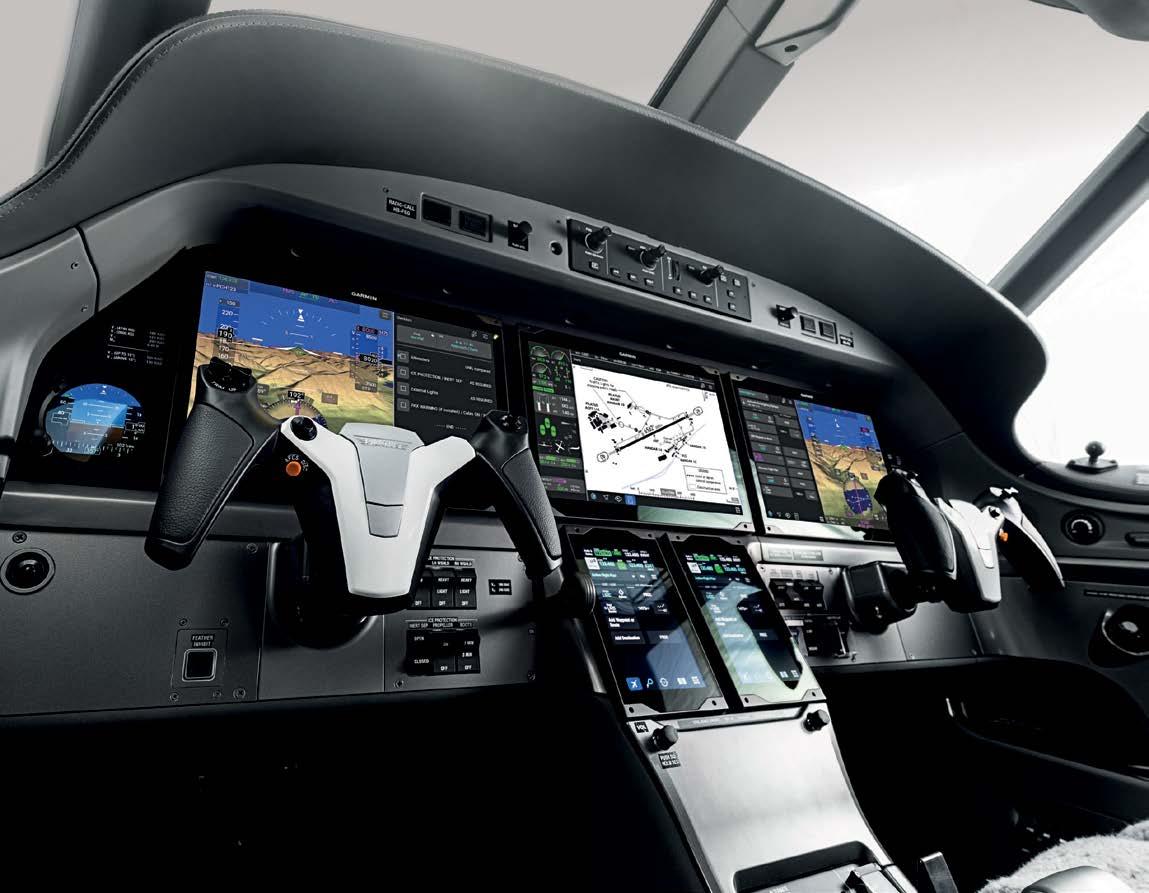



Featuring the Garmin 3000 Prime and largest touchscreen displays in its class, Professional has been redefined – introducing the brand-new PC-12 PRO.
Pilatus Centre SA
Authorised Sales Centre

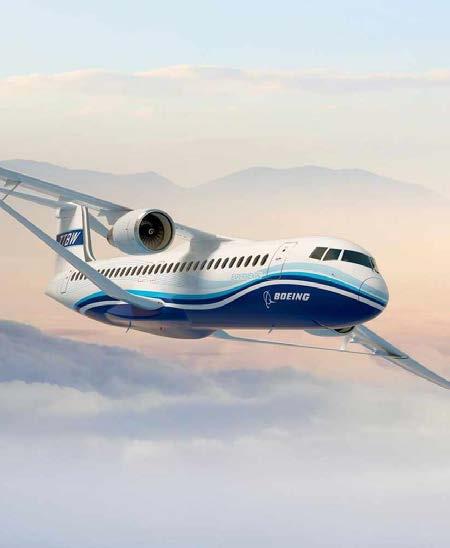


10. Guy Leitch
Attitude for Altitude Leading Edge
20. Peter Garrison
26. Jim Davis Plain Talk
38. hugh Pryor 79.
50. Jim Davis Accident Report
84. Morne Booij-Liewes Register Review

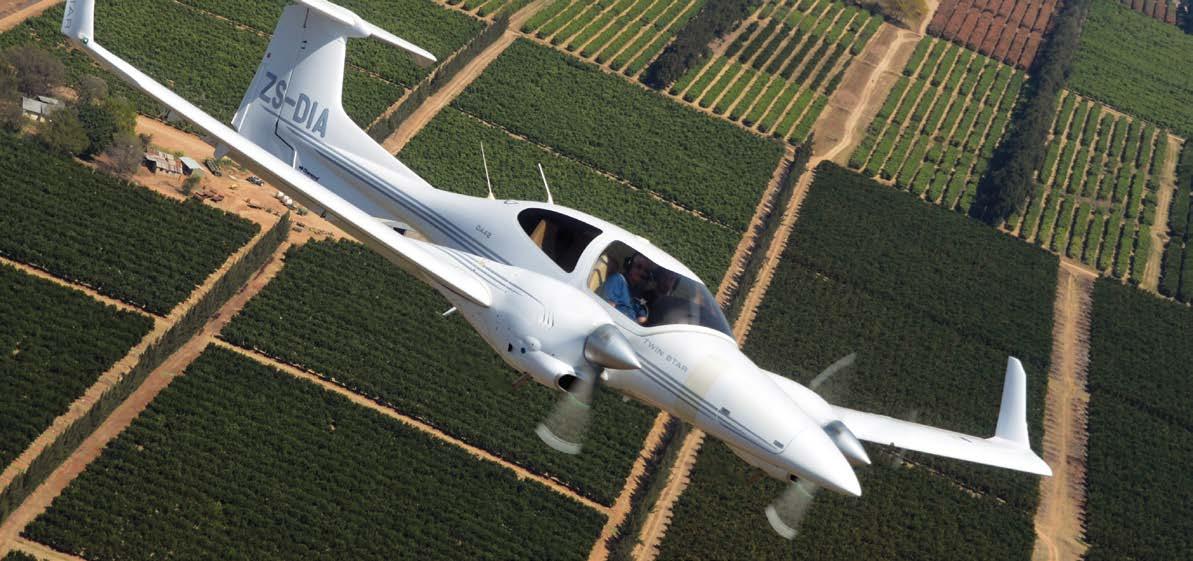

In the more than two decades since we introduced the GNS 430, we’ve continued to develop even more advanced capabilities to enhance your flying. The GTN™ Xi series, our fourth-generation GPS/ NAV/COMMs, leads the way with Smart Glide™ technology, coupled VNAV and missed approaches1 , intuitive traffic displays1, terrain and more. See the upgrade advantage at Garmin.com/Navigators.
In my May editorial I had a rant about insurance companies using the AIC 18.19 disaster to wriggle their way out of paying claims.
MY view of the withdrawal of AIC 18.19 (which now enforces the “12-year rule”) is that it is an unmitigated act of stupidity by the CAA. It reinforces every prejudiced notion that the CAA are a bunch of unfunny clowns out to destroy general aviation. The CAA is digging in its heels, so I fear this matter will end up as ‘lawfare’ in court and once again the regulator will be shown up to have been hijacked by either the idiots or the corrupt. With that said, I need to wind my neck in somewhat about what I said in May. I singled out Santam for using the 12-year rule to repudiate a claim, even though the age of the engine had nothing to do with the cause of the accident.
Because I leave these editorials to the last minute, I failed to give Santam a right of reply. I subsequently chatted
to James Godden, Santam’s Manager: Aviation, who has provided his perspective – which is not unreasonable.
Godden points out that it is a requirement of aircraft insurance that the operator must operate within the law, (and indeed, this requirement is common to all contracts of insurance).
So the question becomes; where does the insurer draw the line?
Godden cites the example that it would not be unreasonable for an insurer to refuse a claim if the pilot’s licence had expired. However, he says Santam do make allowances. For instance, when the pilot’s medical has been passed but is not yet registered by the CAA, they may well be open to an ex-gratia discussion. Another exception may be the classic case of the medical kit having expired pills.
Godden therefore says that it’s not unreasonable for Santam to decline the claim of a Tomahawk with an engine older than 12 years which crashed due to pilot error, particularly as it was being used in a flight school. He says the crux of the case is that because of the 12-year rule, the aircraft did not have a valid certificate of airworthiness. That’s equivalent to the pilot not having a licence.
So the lesson we must take from this sad example is that it doesn’t matter if the age of the engine had nothing to do with the cause of the crash. What matters is whether the aircraft was being operated XWlegally, even if the law is an ass..
Since it’s difficult to operate an aircraft 100% legally, there’s a lesson for everyone here.
SALES MANAGER
Kerry Matthysen sales@saflyermag.co.za 082 572 9473
TRAFFIC
Kerry Matthysen traffic.admin@saflyermag.co.za
ACCOUNTS
Bella Leitch bella@taxfinaccounting.co.za
EDITOR
Guy Leitch guy@saflyermag.co.za
PUBLISHER
Laura McDermid laura@saflyermag.co.za

PRODUCTION & LAYOUT
Emily-Jane Kinnear design@saflyermag.co.za
CONTRIBUTORS
Jim Davis
Peter Garrison
Hugh Pryor
John Bassi
Morne Booij-Liewes
Laura McDermid
Darren Olivier
Iris McCallum
ILLUSTRATIONS
Darren Edward O'Neil
Joe Pieterse
WEB MASTER
Emily-Jane Kinnear

© SA FLYER 2025. All rights reserved worldwide. No part of this publication may be reproduced, stored in a retrieval system, or transmitted by any means, electronically, mechanically, photocopied, recorded or otherwise without the express permission of the copyright holders.
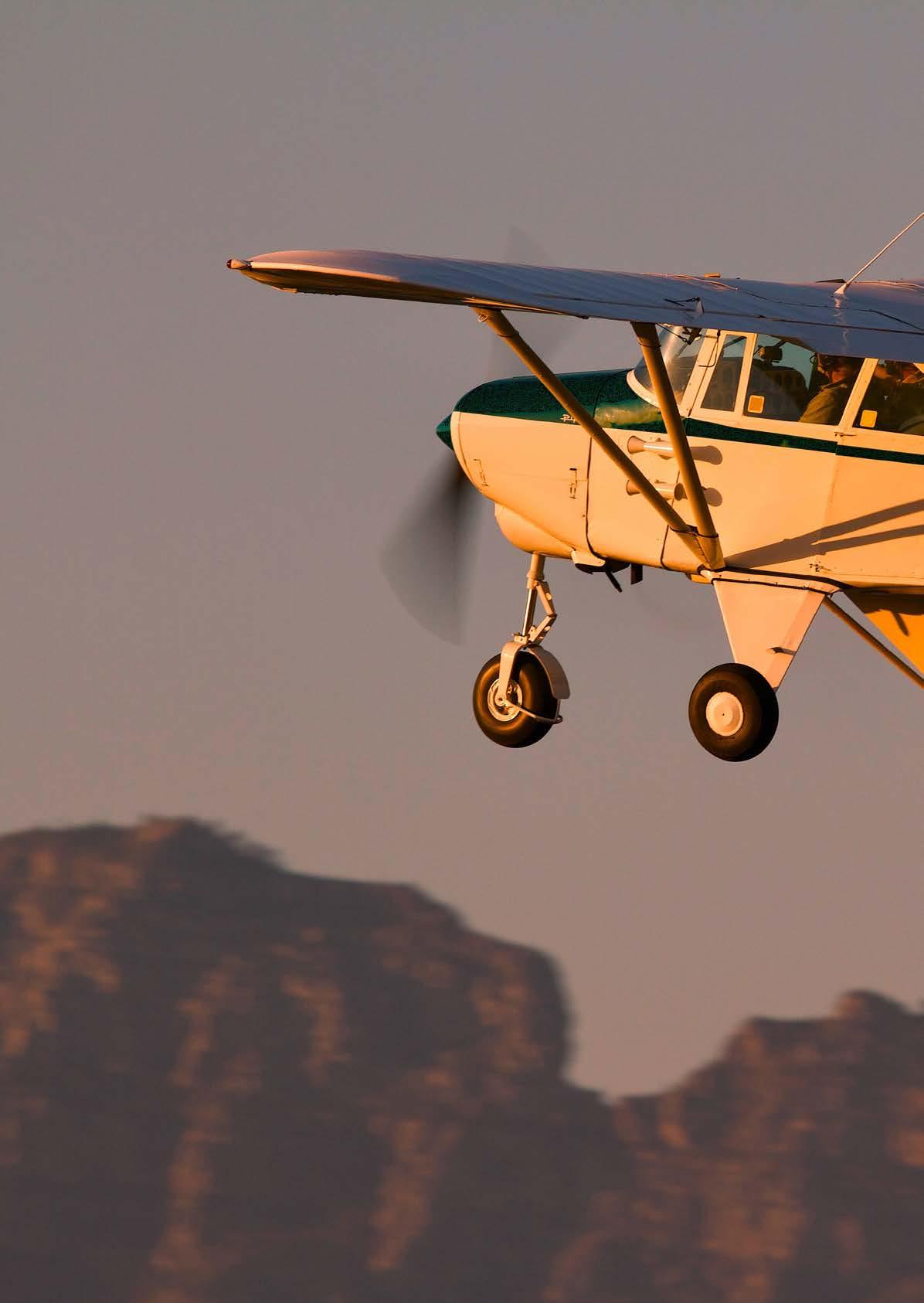
This month’s Opening Shot is a celebration of the winter solstice that marks the middle of winter. From the 21st of June the days get longer and warmer. Also, we are grateful to be able to fly far from the northern hemisphere’s madding crowd.
The short Western Cape days around the solstice did not deter a number of sunset flyers
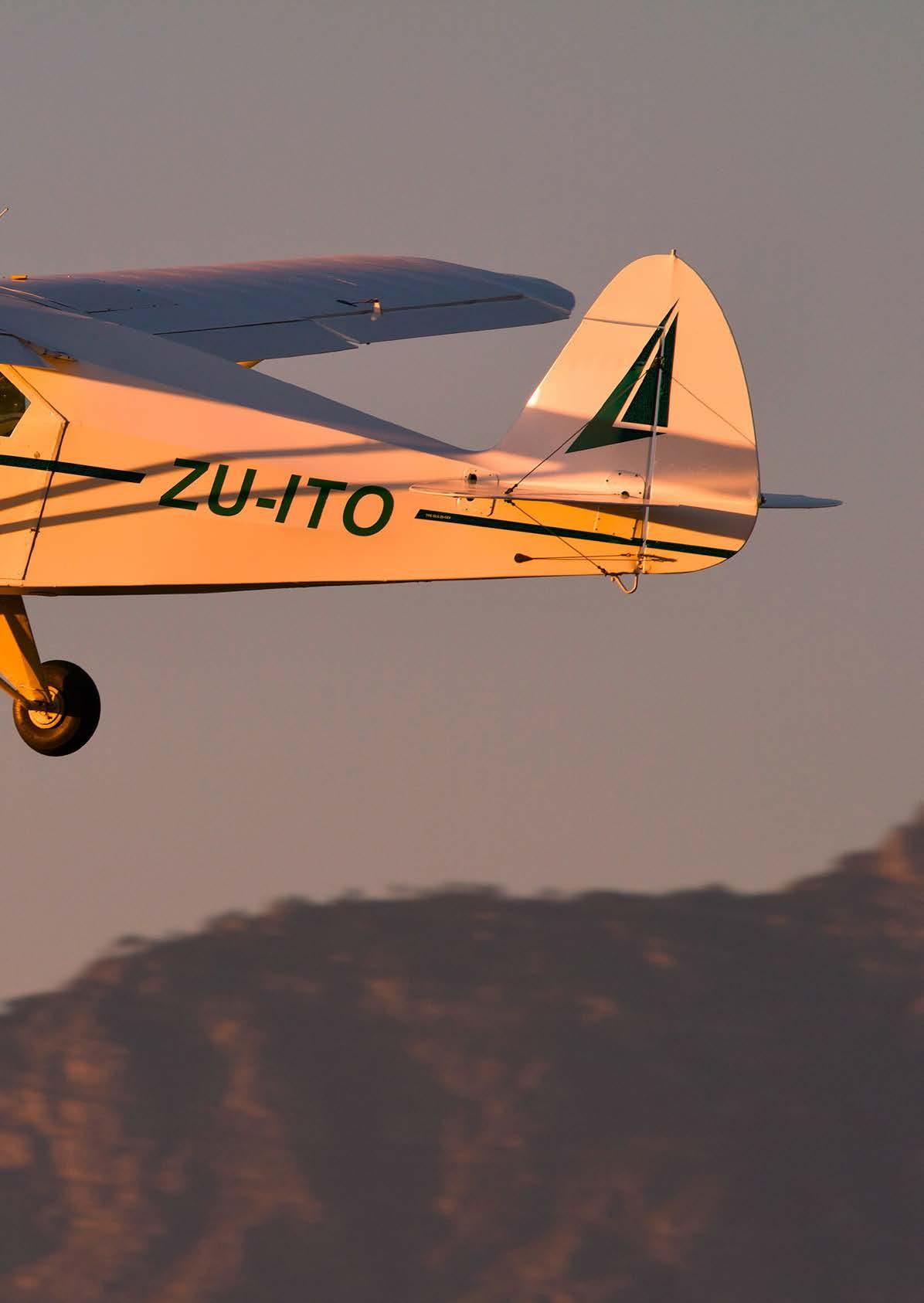
at Stellenbosch. Franki Smith was there to capture them and I really like his image of a humble Piper TriPacer taking-off into the gloaming just six minutes before sunset.
Franki used his Canon 7D with a 100mm – 400mm lens at 320mm. Exposure was 320th second and f8 at ISO 100 with no exposure compensation.
Sometimes it seems that the CAA really loses the plot and sets out to destroy general aviation. (And thus living up to its moniker the Commission Against Aviation). We are in the middle of one of those moments, and for many this is a life or death struggle.

The SACAA will be consigning many GA aircraft to the scrap heap.
Ihave been sitting quietly on my hands watching the noise on social media interspersed with announcements from bodies such as the Commercial Aviation Association (CAASA) and the CAA. In the end the noise-to-signal ratio became hard to unscramble, so I have done something new: I asked Chatgpt’s ‘Run deep research’ button and was amazed at what it produced.
Here is a shortened version that I have taken the liberty of applying a very few of my own changes to, denoted by [square brackets]:
Aeronautical Information Circular 18.19 was a notice issued by the South African Civil Aviation Authority (SACAA) related to aircraft engine overhaul requirements. Originally issued in 2001 (re-issued in 2006), AIC 18.19 effectively provided an exemption from a strict time-based engine overhaul rule: it allowed aircraft owners to maintain airworthiness through periodic inspections, rather than mandating an engine overhaul after 12 years in service, [regardless of how many hours it had accumulated before the manufacturer’s recommended overhaul time in hours.]
In practice, this meant that under AIC 18.19, if an aircraft’s engine was older than 12 years since its last overhaul, a detailed inspection regimen could be used to confirm the engine was still airworthy, instead of automatically requiring an expensive overhaul.
This alternate compliance method was intended to ensure safety while relieving operators of the cost and downtime of a calendar-time overhaul. The circular mainly

benefited the general aviation sector – including private owners, flight schools, and charter operators – by keeping older aircraft flying as long as they passed inspections. For 19 years, AIC 18.19 was part of the SACAA’s published guidance, and many in the industry operated under its provisions.
CAA’S OFFICIAL REASONING FOR UPHOLDING (AND WITHDRAWING)
AIC 18.19
Why did SACAA maintain AIC 18.19 for so long, and why withdraw it now? The SACAA has provided several official justifications:
The CAA will ground many general aviation planes.
In a recent review of legacy AICs, the regulator found that AIC 18.19 was 'out of alignment with current aviation regulations'. Notably, the circular referenced the 1997 Civil Aviation

Regulations (CARs), which had been repealed and replaced by 2011 regulations. In other words, AIC 18.19 was legally outdated – it pointed to rules that no longer existed. This inconsistency created a legal void: the AIC was being used to justify practices not supported by the current law, prompting the CAA to act. The Director of Civil Aviation explained that given these irregularities, it was “necessary for the Regulator to withdraw the AIC.”
SACAA emphasised that an Aeronau-
tical Information Circular is meant to disseminate information, not to grant ongoing exemptions from regulations. In the case of AIC 18.19, the circular had been effectively used as a long-term loophole to bypass the manufacturer’s 12-year engine overhaul recommendation [Note: this is a recommendation by the manufacturers, it is not mandatory] that was embedded in earlier regulations.
The CAA characterised this as an incorrect use of an AIC – since binding requirements or exemptions should be handled through formal regulations or notices, not just an informational circular. This procedural critique was part of the justification for ending the circular’s effect.
The regulator identified AIC 18.19 as a potential safety risk and legal liability. By allowing engines to run beyond the recommended [my emphasis] overhaul interval (based on calendar time), the
circular could increase the chance of engine failure due to age-related factors – a risk that SACAA found unacceptable. SACAA officials noted that the circular was “exempting aircraft owners and operators” from complying with manufacturer-
prescribed overhaul intervals, which raised red flags for both safety oversight and the CAA’s legal responsibility. If an accident were traced to an overdue engine, the existence of an SACAA-issued exemption could implicate the regulator. Thus, continuing to uphold AIC 18.19 was seen as creating liability and undermining the safety mandate of the CAA.
SACAA argues that its duty as regulator is to enforce compliance with manufacturer maintenance manuals and standards, including engine overhaul schedules. Most engine manufacturers (such as Textron Lycoming and Continental) recommend overhauls every 12 years or a certain number of flight hours,
whichever comes first. [Note though that at time of writing, the AIC withdrawal only affects Lycoming, Continental and some Rotax piston engines.] The SACAA’s stance is that adhering to these guidelines is essential to catch problems like i nternal corrosion, metal fatigue, or seal degradation that may not be visible during routine inspections. Overhaul intervals are designed to identify these failures before they become safety risks.” In enforcing the time-based overhaul, SACAA also cites international norms. They point out that authorities like the European Union Aviation Safety Agency (EASA) and even the U.S. Federal Aviation Administration require such overhauls for commercial operations and expect regulators to ensure aircraft are maintained per manufacturer specifications. The SACAA claims it is essentially aligning South Africa’s rules with global best practices on engine maintenance, especially to avoid any issues when South African-registered aircraft fly abroad. There’s an underlying concern that failure to enforce fundamental safety standards could lead to international scrutiny or downgrading of South Africa’s aviation safety rating, should an incident occur. An SACAA official warned that waiting for a major accident involving an ageing engine could be derelict: “If we wait for a major incident to act, we will have failed in our duty of care.” This sense
of pre-emptive safety enforcement is a key reason the CAA has held firm.
According to SACAA, the inspection programme allowed under AIC 18.19 introduced too much subjectivity and variability. Not all maintenance inspectors might catch latent problems in an ageing engine – skill levels vary, and some deterioration can be subtle. SACAA insiders noted that this “blanket inspection exemption created a loophole”, relying on subjective judgments of engine health. The regulator concluded that safety cannot depend on discretionary inspections alone. In their view, a rigid overhaul requirement is a more uniformly enforceable and fail-safe standard. Essentially, SACAA lost confidence that the industry’s on-condition inspections were sufficient to guarantee safety in every case, especially as aircraft age. They even cited an example from the region: a 2019 private aircraft accident in Botswana where an old engine failed after long storage, which was attributed to internal corrosion and missed warning signs – an incident that “raised red flags across the SADC region” about allowing engines to go indefinitely without overhaul. This kind of data, albeit limited, reinforced SACAA’s belief that time limits serve as
an important safety backstop.
In summary, the SACAA’s official justification for upholding the overhaul rule (and thus ending AIC 18.19’s exemption) centres on regulatory conformity and safety assurance. The Authority maintains that its stance is “safety-first”, even if that means imposing economic costs.
As SACAA’s Director Poppy Khoza stated, decisions taken for safety can override commercial interests, and finding a balance isn’t always possible when lives are at stake. The CAA has indicated it will continue engaging with stakeholders and even engine manufacturers to “find a middle ground” or clarify technical requirements, but it has “dug its heels in” on the principle that engines beyond the recommended life must be overhauled for the sake of safety.
After withdrawing AIC 18.19 in late 2023, the SACAA implemented a transition period to give operators time to comply. A general exemption (with conditions) was issued on 1 December 2023 for an initial 180 days, and later extended by another 180 days, ultimately expiring on 26 November 2024.
This exemption essentially temporarily preserved the status quo of AIC 18.19 – allowing affected
aircraft to keep flying under inspection programmes – while the industry prepared for the enforcement of the overhaul rule. SACAA made it clear that after November 2024, no further extensions would be granted; aircraft owners would be required to fully comply with the Civil Aviation Regulations (CAR) 43.02.5 and associated technical standards, which mandate adherence to manufacturers’ maintenance instructions (including any 12-year overhaul recommendations).
Going into 2025, SACAA followed through with this plan. The grace period lapsed, and the CAA began denying Airworthiness Certificates to aircraft that had engines older than 12 years without overhaul. Effectively, those aircraft have been “constructively grounded” until their engines are rebuilt or replaced.
SACAA’s June 2025 media statement emphasises that this policy mainly impacts general aviation aircraft (especially those with Textron Lycoming or Teledyne Continental piston engines) and not large commercial airliners. The regulator also disputes the scale of impact estimated by critics, saying claims of 1,400 aircraft grounded and 300,000 jobs affected are “untested” and believed to be exaggerated. Nonetheless, by mid-2025 there is no doubt that a significant portion of the private and flight-training fleet in South Africa has been forced to stop flying pending costly overhauls. SACAA has acknowledged the industry’s outcry but insists that the ultimate goal is to “ensure aviation safety and security is not compromised”, and it has stood by the enforcement as a necessary tough step.
Industry stakeholders warn that enforcing the 12-year engine overhaul rule has effectively sidelined hundreds of light aircraft, with dire consequences for flight schools, charter operators, and maintenance businesses.
The reaction from South Africa’s aviation community to the withdrawal of AIC 18.19 has been overwhelmingly negative. Aviation industry groups, political figures, and individual operators have voiced serious concerns, arguing that the SACAA’s hardline stance is inflicting economic damage without clear safety
benefits. Key responses and opposition points include:
By the CAA's own estimates, over 3700 aircraft will be grounded due to the new enforcement, representing a large portion of South Africa’s general aviation fleet. These are primarily light planes and helicopters used for pilot training, charter flights, aerial work (like game counting or surveying), and private/business transport. The knock-on effects of suddenly immobilizing this many aircraft are enormous.
Flight schools cannot operate their trainers; charter and safari operators lose business; aircraft maintenance shops and parts suppliers see demand evaporate; and pilots and support staff face layoffs. Industry estimates
suggest up to 70% of the country’s aging general aviation fleet could ultimately be affected, given how many aircraft engines are over 12 years old. A consortium of aviation bodies warned that an “entire sector of the aviation industry could grind to a halt,” with ripple effects on related sectors like tourism, agriculture (which uses planes for surveying and anti-poaching patrols), and even emergency services.
CAASA described the situation as a “serious threat to South African aviation”, noting that many owners may simply quit flying because they cannot afford the required overhaul, potentially crippling general aviation for years to come.
A central complaint is the extraordinary cost of compliance. Overhaul-
BELOW: The GA industry has united in opposition to the AIC 18.12 withdrawal and is campaining vigorously against it.

ing an aircraft engine (especially twin-engine aircraft, common in training and charter) is very expensive in South Africa – often on the order of R1 million to R2.5 million per engine. For older light aircraft, this may exceed the aircraft’s monetary value, effectively rendering them write-offs.
Industry representatives argue that forcing “premature” overhauls – when an engine might have low running hours and be in good working order – makes no economic sense, especially as the country’s aviation sector is still recovering from the COVID-19 downturn.
Each overhaul can take months (if not a year) due to scheduling backlogs and potential parts shortages. Kevin Storie, CEO of CAASA, highlighted that spare parts are scarce and subject to import tariffs,
compounding the difficulty of compliance. The outcome, opponents say, is that many small aviation businesses face bankruptcy or liquidation because they either cannot use their aircraft or must sink unaffordable sums into them.
Both industry stakeholders and the Democratic Alliance have criticised the manner in which AIC 18.19 was withdrawn, saying it was done with no warning, no stakeholder consultation, and poor communication. The withdrawal came “without consultation” in late 2023, surprising many operators
who suddenly found themselves in non-compliance.
Stakeholders argue that SACAA should have engaged the community to develop a phased approach or alternative solutions (such as a tailored inspection programme or a risk-based extension process) instead of an overnight rule change. The Aviation Watch Action Committee and other groups decried the lack of a “clear path forward” when the AIC was pulled, leaving owners scrambling. This perceived heavyhandedness has fuelled resentment and calls for oversight on the regulator’s decision-making process.
A core argument from opponents is that AIC 18.19 worked effectively for nearly two decades without compromising safety. They point out that over the 17 years
that the 12-year overhaul rule was not enforced (thanks to AIC 18.19), South Africa did not experience any spike in engine-failure accidents attributable to “old” engines. In fact, the general aviation safety record during that period remained strong, suggesting that the combination of regular inspections, adherence to hourly maintenance, and sensible preventative care was sufficient to ensure safety. Industry experts have noted the lack of empirical data or accident statistics to justify the new overhaul mandate.
They also challenge SACAA’s claim of “high risk to safety” as unsubstantiated, citing independent studies and manufacturer Service Bulletins that do not show a significant increase in engine failure risk solely due to calendar age, provided proper maintenance and periodic internal inspections are done. In short, the aviation community is asking: Where is the proof that a well-maintained 13-year-old engine is unsafe?
Many see the enforcement as overreach without science, potentially solving a problem that isn’t evidenced to exist in South Africa’s context.
[Surprisingly what has not been mentioned is the widely held belief (which may be empirically proven) that recently overhauled engines are in fact more dangerous than 12-year old
engines with a long record of serviceability.]
Some critics highlight inconsistencies in how the rule is applied. For example, under current regulations, an aircraft operated privately (non-commercially) might still be flown with an engine beyond 12 years (at the owner’s risk), whereas the same aircraft cannot be flown commercially (for hire) once it hits the 12-year mark. This creates a paradox where an aircraft is deemed “unsafe” for paying passengers but “safe enough” for an owner’s personal use or family, which opponents argue “constitutes a mockery of safety”. (It should be noted that as of 2025, even private Part 91 operators and Non-type certified (Experimental) aircraft are now effectively pressured to comply with the overhaul rule for insurance and airworthiness; Sections of the aviation community feel that SACAA’s decision was driven more by bureaucratic or commercial motives than by actual safety data.
The backlash has extended beyond just pilots and plane owners. News of the grounding of [a claimed] 3,000 aircraft made national headlines in mid-2025, portraying it as a “sudden
policy shift” that threatens an entire industry. The story has been covered in mainstream media and aviation publications, often emphasising the potential loss of 300,000 jobs in the aviation value chain (a figure the CAA disputes). Politically, members of Parliament and provincial authorities have been lobbied to intervene. The opposition Democratic Alliance has been especially vocal – not only demanding AIC 18.19 be reinstated or replaced with an
equivalent measure, but also using this case to criticise SACAA and the Ministry of Transport for what they call heavy-handed and ill-informed regulation.
In short, AIC 18.19’s removal has become a flashpoint in the country’s aviation community, rallying a normally fragmented sector into a unified front against the regulator’s policy.j

BELOW: Pilots are taught to avoid lean of peak running. A lean mixture makes a reader hot under the collar.
Areader, incensed by my statement that a leanerthan-peakEGT mixture reduces cylinder head temperatures, wrote: Maybe I am missing something, but it is against the laws of physics that a leaner mixture can run cooler, as the more dense the mixture, the cooler the chamber is, thus EGT rises when lean’d, so how can this be “contrary to widespread belief”?
He adds an apocalyptic postscript:
PS We all know that lean mixtures can melt

valves, crack seats, melt heads, destroy plugs, crack cylinders, burn valves, cause premature destruction of all metals
the “hot spot” touches!!
Now some of Peter’s readers will think lean is good - what about the idiot that overleans cuz
Pete says is good cooler and “OK”!! Liability?
Since he doubts, I will call my impassioned correspondent Thomas. His views are those of a great many pilots, though his Shakespearean spelling (“lean’d”) sets him apart from most others. The subject of mixture is not very complicated in principle; where it gets complicated is in practice. Let’s start - since duelling Thomas has chosen that heaviest of weapons, the Laws of Physics - with a little chemistry.
In reciprocating engines, heat is generated by burning a fuel composed of molecules called hydrocarbons, which consist of hydrogen and carbon atoms in various combinations. What we

call burning is a rapid chemical reaction in which oxygen molecules dismantle hydrocarbons and reassemble their components into carbon dioxide (one carbon and two oxygens) and water (one oxygen and two hydrogens). Energy, in the form of heat, is released in the process. The temperature of everything in the cylinder rises, including that of the other gases, like nitrogen, that compose nearly 80% of atmospheric air and do not take an active part in the combustion process. The gases expand, pushing the piston down, and off we go.
If you took high school chemistry, you may recall, if nothing else, that chemical reactions involve atoms matching up in certain definite numerical relationships, like students at a prom - at least the old type of one-boy-to-one-girl prom. If more oxygen atoms are present than there are hydrogen and carbon atoms for them to link up with, they remain, at the end,
BELOW: Having CHT and EGT readings for each cylinder is essential for LoP.
Likewise the hydrogens and the carbons. When the amounts of oxygen and hydrocarbon molecules present are perfectly matched, the mixture is called “stoichiometric” - stow-icky-ohMET-rick. The stoichiometric ratio of air and avgas is about 15.2 pounds of air to one pound of avgas - which may be visualised as a six-foot cube of air and a four-inch cube of fuel.
That is the idealised picture. Reality is more complicated. Because both fuel and air contain a potpourri of components, a lot of other chemistry goes on in the hightemperature environment of the cylinder. Burning, furthermore, is not a pure and instantaneous process; it is affected by spark timing and flame propagation rate and quenching by the relatively cool cylinder walls and various other things. Nevertheless, a few general statements about mixture and engine health can be made. They are not the ones offered by Thomas.
FLYER MAGAZINE - july 2025 wallflowers.

We can’t weigh the air and fuel entering the cylinder while we’re flying, so we measure the mixture by the exhaust gas temperature (EGT) instead. You would expect that an excess of fuel or air would dilute the heat released by combustion and thereby lower the EGT. So it does. You might also assume that the highest power output and the highest cylinder head temperature (CHT) would coincide with the highest EGT, but there you would be wrong, because of some of the aforementioned complications of combustion.
Different engines have slightly different characteristics, but a typical Lycoming chart shows that power output peaks when EGT is about 125º F on the rich side of peak (ROP). Cylinder temperature is highest at 25º ROP.
Efficiency - power produced per
pound of fuel burned - is greatest at about 40º on the lean side of peak (LOP). These figures vary somewhat with power setting and among different engines, but the general trends remain the same.
This Lycoming chart and others like it have the fuel-air ratio as their baseline. Their perspective is that of a researcher, not a pilot. Since pilots can measure that ratio only by EGT, EGT should be our baseline. With this in mind, I have redrawn the chart.
Mixture, measured in degrees Fahrenheit below peak EGT, grows leaner from left to right. The coloured lines show how fuel flow, speed and cylinder head temperature change as the mixture becomes leaner.
You can see at a glance that fuel consumption (blue) is very sensitive to mixture. Speed (yellow) varies little on the rich side of peak, but falls off more rapidly on the lean side.
These changes are expressed as ratios to the values at peak EGT; that is why all the lines converge at the peak EGT point. For example, at 100º F on the rich side of peak EGT fuel consumption is 20% greater than at peak EGT. That is, if you burn 15 gallons an hour at peak EGT, you will burn 18 at 100º ROP.
In a graph like this the steeper the slope of a line is, the larger and more rapid is its response to the controlling variable - in this case, EGT. Lines that are relatively flat reveal small, probably inconsequential variations.
The most interesting line, in the context of Thomas’s prediction of a general deflagration within the engine, is that of CHT (red). CHT rises gradually as the mixture is leaned, hits its maximum a little on the rich side of peak, and drops thereafter. It drops much more steeply on the lean side than it rises on the rich side. Many pilots, trained to shun an overly lean mixture, would find this hard to
believe, but pilots who regularly fly on the lean side of peak know it well: Cylinder heads run noticeably cooler LOP.
So how did Thomas, and others like him, get the idea that LOP operation would fry an engine?
I suppose it may be due to a number of factors. One is historical. Much of the science of high-performance aviation recips was developed before and during World War Two, and applied to highly supercharged engines whose design goal was a high power-toweight ratio. These engines were diffi-
cult to cool and prone to detonation at high power, but could be protected by running rich - in effect, cooling with fuel. There arose, consequently, an association of lean mixtures with possible heat damage, and rich ones with safe, conservative engine management.
The story of Lindbergh teaching fighter pilots in the Pacific theatre to increase their range by leaning the mixture and reducing rpm illustrates that belief. You would suppose that when cruising long distances over open water one would naturally lean the mixture out of concern for one’s own
skin. But pilots were apparently not doing it, I suppose because they believed that richer was better.
That belief filtered down through flight instructors to their students. When fuel was cheap, flight schools didn’t mind using it for cooling. Proper leaning also requires EGT instrumentation that trainers seldom had, and an attention to engine management that students - not to mention most pilots
- did not care to pay. With fixed-pitch props, furthermore, the most salient effect of leaning - only up to a point on the rich side of peak - was to increase power and speed, and that was what pilots liked.
Furthermore, many engines, including most carburettor-equipped ones found in trainers, do not lend themselves to LOP operation because of unequal distribution of fuel to the cylinders. If one cylinder becomes so lean that it begins to miss while another is still running at maximum temperature, LOP cruise is impossible.
The engine manufacturers have vacillated on mixture, with Lycoming usually taking the more conservative stance. GAMI, the Ada, Oklahoma manufacturer of custom injectors designed to even out the mixture distribution among cylinders, strongly advocates LOP operation, and as far as I know has not had to pay for a lot of melted engines. My own practice is to lean to about 50º LOP immediately after takeoff and stay there, climbing and cruising at 65% power or less. As you may guess, I am not uninfluenced by the price of Avgas.
Thomas would - no doubt - call me “the idiot that overleans.” He wouldn’t be the first. But at least my cylinders are cool. Furthermore, at 1,800 hours I have never had any valve or cylinder trouble and my compressions are all better than 75/80.
Sorry, Thomas, but you’re wrong.
de Villiers Engelbrecht is the new CEO of Airlink. In an interview for this issue with Guy Leitch he made the following (in retrospect obvious, but still telling) observation.
“Pilot pay is tied to the dimensions of the aircraft.”

StandardAero Lanseria, a Pratt & Whitney PT6A designated overhaul facility (DOF) and the sole independent DOF approved for the PT6A-140, is pleased to support operators across Africa with Pratt & Whitney’s Flat Rate Overhaul (FRO) program for PT6A engines which combines OEM-level quality with guaranteed “not to exceed” capped pricing. Meaning that you can plan your maintenance expenses with confidence, and without any compromises.
The FRO program does not incur extra charges for typical corrosion, sulphidation or repairable foreign object damage (FOD), and PMA parts are accepted.

As the industry’s leading independent aero-engine MRO provider, StandardAero is trusted by airline, governmental and business aviation operators worldwide for responsive, tailored support solutions.

RAISING THE STANDARD OF EXCELLENCE years of PT6A MRO Excellence


IF YOU WERE FERRYING A 235 CHEROKEE ACROSS AN EXTENSIVE LUMP OF VERTICAL SCENERY IN THE SOUTHERN CAPE WHEN THE ENGINE SUDDENLY BECAME INTERMITTENTLY REBELLIOUS, YOU WOULD BE FACED WITH SOME SERIOUS DECISION MAKING.

WOULD it be a good idea to pull the power right off and do a forced landing on an iffy bit of territory near the bottom of a valley, or would it be better to hope the Lycoming had sufficient fortitude to carry you across the last patch of tiger country?
Being a devout coward, I went for the reasonable certainty of a safeish landing in the valley rather than a nerve-twanging ten minutes of yes-nomaybe across the remaining nasties.
At the time I had perhaps 10,000 hours in Cherokees, much of which was instructing, and much of that was doing glide approaches and practice forced landings, so getting safely into my chosen field should have been easy.
Dear parishioners and instructors, the words should have are the giveaway. Before reading on, take a sip of communion wine, close your eyes
JIM DAVIS
and try to imagine the devils that would conspire to make this forced landing a particularly hellish one. What would make it so much more difficult than all the previous ones?
Okay, here are some of the things that make training forced landings a bit of a farce because they generally don’t prepare you for the real world.
First, it’s very rare that a healthy engine suddenly stops without
it’s very rare that a healthy engine suddenly
warning. Certainly, engines can do this – particularly when you run out of fuel, or run one tank dry. But in these cases it should not come as a surprise.
And if this does happen the following standard procedure will take care of it:
1. Close the throttle – smoothly
2. Change tanks, and
3. Head for the landing area
Let’s run through those points.
Close the throttle. There are two main reasons for this. First, you immediately know where you stand with your aircraft – you are flying a glider.
The engine is not going to give you any unexpected starts and stops that might cause you to keep changing your plans. Second, each time the engine suddenly changes between power and no power, there is a danger that the crankshaft counterweights become ‘detuned’. Here’s what Mr Lycoming has to say about it:
Detuning the counterweight system of the engine can occur when the engine operates outside of its normal range and by abrupt throttle change. When this happens the dynamic counterweights cannot follow the spectrum of frequencies for which they were designed and rapid and severe damage to the counterweights, rollers and bushings may result, culminating in engine failure.
Also, detuning can occur if the power is suddenly cut-off, such as during a simulated engine failure as required for pilot training. To avoid detuning during simulated engine failure, use the mixture control to shut off the engine and leave the throttle in the normal open position until the engine has slowed down due to lack of fuel. Then close the throttle to an idle condition. The throttle being open allows the cylinders to fill with air, maintaining the normal compression forces which are sufficient to cushion the deceleration of the engine.
Obviously, it’s fine if you close the throttle normally and gradually, but that does take away the startle factor of a simulated engine failure.
Even with a real engine failure

after takeoff, it’s important to close the throttle. My mate Neville Austin had one in his Colt. He got the aircraft into a short field with gum-trees at the far end, but just after touchdown the engine came to life again at full power.
Neville found himself in a silly situation with both hands pulling on the donkey’s-dong brake and no spare hand to close the throttle.
Right, that’s dealt with the throttle –now let’s move on to the fuel.
Change tanks. Fuel starvation is by far the most common cause of engine stoppages. So it makes sense to
change tanks – and bang on the fuel pump. NOTE – fuel injected Continentals often don’t like having the pump switched on during flight, so be very careful to follow the POH’s instructions about the pump. Do that NOW – not after the engine failure.
Head for the landing area. If you say; ‘but I haven’t selected a landing place yet’, then please light a big fire in the garden and chuck your license into it. You shouldn’t be flying if you don’t have a back door in mind all the time. It might not be a specific field, but it should at least be an area: towards the
farmlands to my left, or away from the mountains, or away from the forest, or towards the beach, or towards the golf course.
And you don’t need to finish fiddling with the fuel system before you turn. You should close the throttle and change tanks while you are turning.
The story about converting speed to height is mostly nonsense. Think about it – the chance of your landing field being straight ahead are only one in 360, so use your speed to get you round the turn rather than gliding away from the field while you convert speed to height.
In an aircraft that cruises at 120kts and glides at 70 you aren’t going to gain much height by the time you have recovered from the startle factor and taken action.
Finally, I think it’s dubious whether trying to gain height will do any good. If you convert kinetic energy to potential energy, you don’t gain total energy. In our little aeroplanes, if the field happens to be straight ahead, simply hold the nose level until you are at your best angle of glide speed.
And this brings us to another bit of guesswork. The best angle of glide speed only works if there’s no wind. If there’s a tailwind then you need to reduce your airspeed a bit to have the advantage of the tailwind for longer; but if you glide into wind then you need to lower the nose a bit so that the extra airspeed helps you cover more ground.
Exactly how much you need to change your glide speed to allow for how much wind is anybody’s guess.
Here’s a mind experiment to help you understand the wind problem. Let’ say you are a couple of miles offshore at 3000’ when the engine stops. You immediately turn towards the beach and come back to your best angle of glide speed of 70 kts. Unfortunately there is a 70 knot off-shore wind, so you will have a groundspeed of zero. You are stationary and will land in the water immediately below your present position.
However, if you stuff the nose down and glide a 100 kts you will at least be approaching the beach at 30 kts.
Obviously, if you glide downwind, you will have better range if you come back slightly to your best rate of descent speed – but no slower.
So I hope that thought will help you and your pupes remember that you need to increase your airspeed if gliding into wind.
Phew. That covers your initial actions. Just close the throttle, change
tanks and head towards your field. Next TRIM. You and I know that trim is a flying control – not a checklist item. But it’s your job to make sure your pupil uses it all the time to relieve stick pressures. If she doesn’t trim now the whole thing is going to be a dog’s breakfast with the airspeed all over the place. It’s your job to hammer this into her head particularly for a forced landing.
You can do this while you are trimming.
Conventional wisdom says you should have key points at which you should be at a certain altitude. Guys and girls and instructors and pupils and captains and copilots please don’t try to use key points, and particularly don’t teach it – it does not work. For those at the back who are dozing – let me shout that out again – key points don’t work.
Yep, I know you have used them and they do work for you at your home airfield, and where you know its elevation and your altimeter is set to QNH. But for real world forced landings where you don’t know the elevation of the field

and the altimeter is set to something else – key points don’t work. Promise – I’ve been there several times.
So don’t chase the altimeter; it’s a waste of precious time that you should be using for judgement outside the cockpit.
Okay now we have dealt with those initial actions – you are gliding towards an area of decent landing places and the aircraft is nicely trimmed. Here are the last steps:
1. Engine
2. Mayday
3. Pax
4. Landing checks
Do a round-the-cockpit check to see if you can find the problem and get the engine running again. I advise going round the cockpit rather than trying random things. This way you will know you have tried everything – there’s no chance of missing something, and you don’t have to keep wondering about it.
I suggest you start in the roof – go down the windscreen pillar to the centre console and then on to the floor and between the seats. Then you work your way from the fuel selector to the left of your knee (in most of the Piper singles) and then across the bottom panel and back across the top panel.
Have a look at the diagram. This method works for all aircraft – so
you don’t have to memorise different checks for each aircraft.
I’m going to spend a bit of time on this because, surprisingly, there are a number of things you can do in the cockpit to restore either normal or limited power,
Starting in the roof – some aircraft have mag switches there, others have fuel gauges, fuel pumps, and even the throttle, pitch and mixture controls. If this doesn’t apply to the aircraft you are flying, still teach your pupe to start in the roof – one day it will apply if she flies enough types.
What is an engine failure? Actually, the answer is not that obvious. Here are six types, each needing different treatment.
This is the one they teach at flying schools. It’s almost certainly fuel. You have run a tank dry, or there’s a blocked pipe, or the pump has packed up. Putting on the pump and changing tanks will probably fix it.
Try throttle friction and carb-heat first. Otherwise don’t trust the brute – it can dump you at any moment. If you
are over towns or tiger country use the remaining power to get you within gliding distance of a landing place –and then sit.
Don’t worry about fault finding – just plan your descent. Actually you glide a bit further with the prop stopped so you may need to allow for this.
This is nasty. It can give you false hopes and lead you into deeper trouble. Remember my mate Neville in his Colt – it’s a powerful lesson that applies to any engine failure, once you are committed to land – throttle fully back. That way you know where you stand.
Intermittent troubles can be dirt or water in the fuel. Or a baffle in the silencer breaks loose and falls over the outlet pipe. Vibration can cause it to sometimes cover the pipe and sometimes not. I had the mixture cable detach itself in a Grumman Trainer. This allowed the little arm on the carburettor to swing back and forth causing random bursts of power. You might be able to use spasmodic power to get you to a landing spot –but don’t count on anything. Sometimes it’s best just to close the throttle and treat it like a total engine failure.
You see, hear or smell something that tells you there is trouble brewing. While a warning is great, it can easily panic you into making a lethal decision.
A pilot and three pax took off from Wonderboom in a Cessna 182. At 400 feet the oil-cap came off covering the windscreen in black oil. The pilot, thinking he had a catastrophic engine failure, did the worst possible thing. He flung the aircraft into a steep turn to get back to the runway. Halfway round, the aircraft stalled and spun, killing all on board. Investigation showed that the engine would have kept going for a long time. So don’t let an oil leak panic you - it takes very little oil to make a huge mess.
When something starts going wrong look for supporting info to back up your suspicion.
I was flying a Cherokee at low level over the bush when the engine started to smell hot. The gauge confirmed high oil temp then the pressure started dropping. I was heading for a major failure. Fortunately I was able to land on a farm before the big event.
I collected a toilet roll in the air intake of my Tiger Moth – don’t ask. Also had a spark plug unscrew itself and blow out of the cylinder just after takeoff over the Knysna lagoon.
It caused such a lean mixture in the manifold that the engine died completely. I mention this category because machinery has a habit of confounding the wise by inventing new ways of failing.
So that deals with the engine. Remember we said after your initial actions, which had you nicely gliding towards the field with the aircraft trimmed and a plan in your mind, there were four things to do before touchdown, they were:
1. Engine
2. Mayday
3. Pax
4. Landing checks
So we have dealt with the engine. If you can’t get it going, now is the time to make your Mayday call – but only if you have time. We all know the sequence aviate, navigate, communicate. So communicate is the least important.
Brief them – you know the drill which includes popping the door and wedging a shoe into the gap so it can’t close again.
Again, you know what to do but I’m always horrified to see photos of aircraft that have had a forced landing and they often have little or no flap selected.
The Gleitch won’t give me the space to explain why the energy that has to be dissipated after a flapless touchdown is often close to double that of a full flap on-the-stall landing. In plain language a full flap landing is by far your best bet. Instructors – when you explain this, emphasise it’s because of the square-of-the-speed rule. Double the speed causes four times the damage.
Finally discuss your choices on the gear-up or gear-down debate. A lot of it revolves around high-wings tending to nose over and go on their backs if the nose gear breaks off or sinks into soft ground.
The SAAF taught us to put the gear down regardless of terrain. If it broke off that in itself would have a slowing down effect. Also in a low-wing aircraft the gear would keep the wings and fuel tanks off the ground for at least some of the landing roll.
Ultimately it’s an informed decision that you alone can make.
Next time I want to tell you about at least ten controls that you can fiddle with in the cockpit that may restore some or all of the power, as well as some surprising things to consider when you look for a field.



• Now certified for TCAS training.
• RNAV and GNSS Certified on all flight models from single engine to turbine.
Tel: 011 701 3862
E-mail: info@aeronav.co.za
Website: www.aeronav.co.za
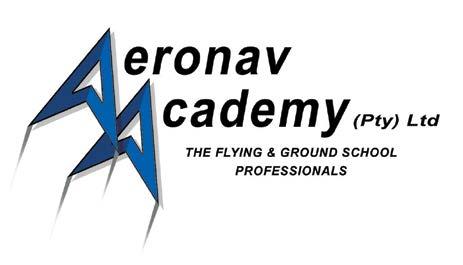





It’s not always the pilots’ mistakes which cause the disasters, whatever you may have gathered from all those reports which you have read.
IF the tail fin falls off, like it did on the Japanese 747, there is only going to be one end to the story. The fact that those pilots managed to stay in the air for over twenty minutes in that configuration is extraordinary enough, but that four people should have survived the ensuing meeting between the aircraft and the mountains is a miracle.
In another recent tail fin disaster, the only way the pilots could have avoided the tragedy would have been to refuse the Takeoff clearance. But why should they have done that? OK, they were some seconds short of the statutory separation time, but in how many instances has wake turbulence been found to have torn an aircraft to pieces in the air? That’s right. Never. If a door comes open in flight, then there is generally a more direct trail to the culprit. Who didn’t shut the door properly? Why not? How can we pre-

vent it happening again? And doors have caused their fair share of disasters.
We’ve seen them come off and wrap themselves round the horizontal stabiliser, removing all elevator control.
We’ve had them blow out at altitude, causing explosive decompression which collapsed the cabin floor and seized all the control cables.
There was a recent incident in the Caribbean with a Twin Otter, when a
nose locker door came off. Half of it smashed through the windscreen and the Captain’s head. The other half tore its way through the blades of the left propeller and caused the aircraft to crash into houses on short final.
My incident, although dramatic, was, fortunately not catastrophic.
I had just picked up a surgical team of two doctors, Tom the surgeon, David the anaesthetist and a theatre nurse called Pam, from a place called Kassulu, not far from Lake Tanganyika in
Tanzania. Kassulu is very close to Ujiji, where the American explorer, Henry Morton Stanley, made his famous “Dr Livingstone, I presume” remark upon meeting the legendary David Livingstone, after an epic nineteenth century search.
The aircraft was, once again, the trusty Cessna 402B.
We climbed away and set course for Nairobi. Once established in the cruise, I settled myself down for the beauti-
ful ride over the Serengeti Plains, past the vast crater of Ngorongoro and the Great Rift Valley.
About twenty minutes into the flight, an invasive hissing sound started to bother my left ear. I checked the handle of the pilot’s access window. It was in the locked position. The secondary lock, on the forward frame of the side window, was also closed. I reached across with my right hand to test whether the spade-grip handle was indeed fully locked. As my hand touched the handle, there was a cataclysmic bang, followed by an all-pervasive roar, a crash and an impact on the top of my head. The pilot access door had disappeared.
The view was incredible, since I was now looking out through a gaping hole in the side of the fuselage. My immediate problem was that the cockpit roof continued rhythmically to bang the top of my head. Hurried research revealed that the door, being hinged at the top, had swung open in the wind violently enough to crush the roof of the cockpit. As the broken roof flexed in the passing torrent of air, the flow changed, pushing the door upwards until it hit the clean air above the fuselage. This drove the door down again and the cycle repeated itself...with my head as the buffer.
My immediate reaction was to reduce speed and the immediate reaction of the door was to stop bouncing
the roof on my head. So, obviously, I was doing the right thing, to start with anyway. The next thing to do was to check and make sure that all the other bits of the plane were still on the team. We appeared, with the exception of the door and the cockpit roof, still to be playing with a full pack.
Next thing...we needed to get back on the ground ASAP, or sooner, so I gently turned the nose of the aircraft back in the direction of Kassulu. Now my attention turned to my passengers. I beckoned to the surgeon to come forward and he gingerly left his seat and edged his way cautiously up to my end of the plane.
“Tom!” I shouted against the roar of the passing wind, “The door latches have broken. We’ll have to go back to Kassulu. Everything else seems to be OK, so could you reassure David and Pam and I’ll get through to Ops and ask them to call Kassulu Hospital to come and pick us up.”
“Right, Hugh. Anything else you need us to do?”
“No thanks Tom.” I laughed nervously, “I expect you’ve already said your prayers haven’t you?” Tom was well known to be a rabid atheist, but he saw the joke and carried his laughter into the back, to infect the others.
The flight back to Kassulu was uneventful and the next day engineers came down and stuck the door back in place so that I could ferry the plane
back to Nairobi for repairs. It was discovered that the spade handle main lock could be twisted into the locked position without the latches being pushed fully home in the frame. The shutting mechanism had become deformed through years of use and the latches were only hanging on by their finger nails. Then one day the finger nails broke and the door flew open.
The incident with the window was, as far as I’m concerned, the fault of the design. Out of interest, the internal enquiry found me culpable because “...it is the responsibility of the pilot to ensure that all doors and hatches are secured before flight.”
The fact that the mechanism was found to be faulty was produced as ‘mitigating circumstances’, which meant that I did not have to submit myself for ‘further training’ or any other humiliation. Still the culpability smarted a bit and in fact, still rankles to this day!
Iran and Iraq abruptly closed their airspace following American and Israeli airstrikes on Iranian nuclear facilities.

THE closures forced widespread flight diversions and cancellations across the Middle East, particularly on key routes connecting Asia and Europe.
Airlines such as Emirates, Lufthansa, Air India, and flydubai have rerouted or grounded flights, with some carriers opting to divert through Central Asia and Saudi airspace. Iraq suspended all aviation operations, while Iran imposed a total airspace ban.
Air India confirmed that at least 15
international flights—originating from Washington, Toronto, and London— were rerouted via Vienna, Frankfurt, and Jeddah. Delhi Airport said operations remain normal, though authorities advise passengers to check with their airlines.
Aviation risk analysts note that commercial aircraft have previously been caught in regional conflicts, and caution remains high across Jordan, Israel, and neighboring regions, where airspace restrictions are also in effect.






Day and night, the fun doesn’t stop!
Our catered camp site on the airfield means you won’t miss out on any of the activities – the early morning wake up call of P 51’s getting airborne, the evening ultralight parade, the STOL competitions and of course, the incredible night airshows! Plus all the camaraderie and fun only a camping group can offer.


Our campsite offers you a home from home at Oshkosh, tents and bedding, meals and beverages, charging facilities and sheltered seating – no camping gear required, bring only your clothes!
Tours depart Johannesburg, Durban or Cape Town Friday 18th July and return Tuesday 29th July 2024.
Prices from R40 650, Early Bird specials available!
Neil +27 84 674 5674 info@airadventure.co.za www.airadventure.co.za Secure your place HERE

The twin for our time?

Diamond Aircraft’s DA42 Twin Star has been around for years, but as the twin training fleet ages, the need for a modern replacement becomes all the more evident.

WHAT makes Diamond’s DA42 different is that it is the first successful light twin-engine design in more than 25 years.
The JetA burning engines had a difficult birth. Diamond started out with Mercedes car derived Thielert Centurion 1.7 turbocharged direct-injection diesels of 135hp (a nice round 100kW). The engines feature dual-channel, full-authority digital engine control (FADEC) allowing powerplant and propeller settings to be

LEFT:
BELOW:
governed by a single power lever and allowing almost carefree studentproof engine handling.
Teething gearbox and cylinder head problems bankrupted Thielert. Fortunately the design and concept was deemed worthy of saving and so the engines were taken over by a new company, Austro, who solved the problems.

The sleek airframe with its compound curves is composite carbon fibre, giving the DA42 passive safety levels that meet EASA 21 rules, as well as efficient aerodynamics and an essentially unlimited airframe life.
Key for the multi engine training market is that the latest iteration, the DA42NG features Garmin G1000 NXi integrated digital avionics based around two large flatpanel screens that replace conventional instruments and include a crew alerting system (CAS). The fully integrated Garmin G1000 NXi is complemented by an integrated autopilot and a long list of avionics options - such as weather radar and synthetic vision. The maximum operating altitude is 18,000ft and a cabin oxygen system is fitted to supply all four occupants for extended flights above 10,000ft. This makes it easier to take advantage of the high
altitude speeds available from the two turbocharged engines.
on a C172 camership. We flew out of Hoedspruit Civil on a

The pre-flight is straightforward. There is an inspection panel in each nacelle to check engine oil level. The two locking catches for each baggage compartment door in the nose need to be checked thoroughly. Hoedspruit based former Mirage fighter jock, Koos Kieck, happily agreed to fly the DA42 from the right seat for air to air photos, formating
warn 30-degree Celsius day with two in the front, one in the back seats, minimal baggage and half fuel. This gave a CofG in the middle of the envelope, a takeoff weight of 1,585kg (3,495lb), and still left a very useful 125 kg (275lb) useful load. You get into the cockpit via a small step behind the wing root and handles above the cabin windows to climb on to a
wing walkway. The huge forward tipping canopy makes it possible for each pilot to enter from his own side, but passengers only from the left side. The canopy must be opened carefully in a high wind. The forward-hinged clamshell cockpit canopy is enormous and you tend to step into the seat from above, rather than from the side. Flying in the rain will make the cockpit wet.
Useful for the African sun, Diamond has painted a large fixed
sunscreen on to the canopy to shade the occupants.
From the left seat, the field of view is excellent all the way around to the horizontal stabiliser
above the fin. But the view over the nose is limited by a higher glareshield to accommodate a horizontal row of standby flight instruments above the Garmin screens. Also, the nosewheel leg is long for prop clearance.
The seats are fixed to the floor for crashworthiness and have lumbar adjustment. Rudder-pedal position is adjustable to accommodate the pilot's height and the inertial reel car-type three-point seat belts are easy to use. Storage nets on the cockpit walls secure gadgets.
Unusually for a twin, each pilot has a fighter-like control stick that grows out of the seat squab. This makes for a clean and uncluttered cockpit floor and avoids the pilot’s hand obscuring the instruments.
Pre-start checks are simple. Inserting the ignition key brings up a notice on the screen confirming the diesel glow plugs are energised.
Engine start and propeller rotation is instantaneous, with the ‘glow’ caption disappearing, accompanied by a distinct change in engine tone, after about 5 seconds. The key can then be released, with the geared prop spinning at around 900 rpm.
With both diesel engines chuntering happily on the wings, the avionics master is turned On, bringing up the flight and navigation displays on both EFIS screens. The two FADEC channels on each engine are cycled with a push button and you are ready to taxi.
For taxiing on hot days, the canopy

Throttled right back to 34% power for photos from a C172 fuel flow is just 5.6 USgph.

You
can be locked in a cooling gap position. To get going, power is increased to 1,200 rpm and we moved forward briskly. Once moving, power is reduced to 1,000 rpm to maintain the flight school recommended ‘fast walking pace’.
The wide-track undercarriage gives a solid and stable feel, especially when taxiing over rough grass. The rudder pedals and toe brake arrangement is similar to that in gliders with the pedals pivoted from a central point at their base. Accurate taxiing can be maintained with small pedal deflections. The disc brakes are effective and not grabby.

ABOVE: Nose baggage bay is tight but helps with CofG.
OPPOSITE PAGE: Four seats plus good baggage space makes the DA42 a useful tourer.
The two power levers are the only engine/propeller controls, so the centre console is uncluttered, unlike legacy twin-engined aircraft.
Pre-takeoff vital actions are again short, logical and simple. You enter V-speed bugs on the vertical airspeed tape of the G1000: VR was set at 74 kt and V2 at 83 kt.
We had a brief taxy to the holding point of Runway 35, and the engine warmed quickly for the brief run-up. With full power against the toe brakes, we checked each engine was stable at 2,300RPM and that the CAS field in the G1000 screen was empty.
Takeoff acceleration is brisk. Despite a gusty crosswind, the centreline could
be accurately tracked. Rotation off the runway and into an 8° nose-up climb attitude was done in one easy movement with a small stick deflection. Takeoff distance was about 350m.
Gear was retracted almost immediately after lift-off with no pronounced trim change. The DA42 accelerated to a climb speed of 100kt and 850 fpm and the aircraft is responsive and easy to fly.
For turns up to rate 1, the controls are well harmonised but steep turns require rudder to keep the ball centred. Aileron-only turns, using full stick deflection, resulted in an immediate, opposite heading change of about 5 degrees due to adverse yaw, but this was neutralised by the

aircraft’s natural directional stability after 2-3 seconds.
The engine power levers are easy to use, allowing virtually carefree operation. Diamond recommends the levers are advanced from idle to full power over about four seconds, rather than slamming them open.
each
Both Garmin EFIS screens can show the same basic information, or flight data can be shown on the left display and navigation on the right. The vertical tape presentation of airspeed, altitude and vertical speed take getting used to when converting students from an aircraft with old dial-type instruments.
The latest G1000NXi offers an incredible
array of features as an advanced display and flight-management system combined, and both new and old pilots will need almost as much training on this as the aircraft itself.
Testing the handling straight and level revealed that the natural stability is good. The pitch change phugoid is well damped and, with a period of a stately 60 seconds, would not be obtrusive in cruise flight. The short-period check showed the aircraft was quick to respond to stick input and well damped. Dutch roll was quickly damped within half a cycle without the need for pilot input. Spiral stability was neutral or slightly positive, which is a good safety feature for inattentive students.
Unaccelerated stalls were evaluated with zero, takeoff and landing flap deflection, all at idle power, and were docile. Controls in all axes were effective approaching and in the stall. The stall
warning horn sounded 5-7 KIAS above stall, which was indicated by increasing airframe buffet, a distinct nose drop and vertical descent of about 2-300ft/min. There was no wing drop even with aileron input.
The flaps up stall was around 65 KIAS and with full flaps 58 KIAS. A stall in approach configuration, with take-off flaps and 30% engine load, but with the nose about 20° above the horizon and distinct airframe buffet, had the horn sounding but virtually no sink rate. The plane just mushed and refused to try drop a wing. I reckon any pilot or student would have to more than grossly mishandle the aircraft on approach to stall it.
Our final check was to assess the DA42’s behaviour after a simulated engine failure at V2. We stabilised at 80 KIAS with full power, the nose about 10 degrees above the horizon and then the left power lever was pulled back to idle. The swing
towards the dead engine was instantaneous, but could be held with rudder, although the rudder forces were high. Once the gear was retracted, the rudder force reduced as the nose gear doors were no longer acting as a forward fin.
In cruise at 75% power, in level flight at 165kt and 5,000ft, fuel consumption was 21 litres/h (5.5 US gal/h) per engine, with the EFIS showing a
excellent economy and the latest and highest levels of passive safety.
The DA42 has no natural competitors in its class and sets a benchmark for new generation twin trainers.
Diamond took a bold step in combining so many new technologies in an all new aircraft. As a trainer it was perhaps a plane ahead of its time but now, 15 years since production

1,110km (600nm) range and 4 hours endurance. In a long-range cruise at 50% power and 140kt, fuel flow was 14 litres/h, calculated range 1,480km and endurance 6 hours.
The DA42 is delightfully easy to land. It is stable in pitch and can be held slightly nose-up and allowed to settle. Touchdown was at about 60 KIAS and it was easy to track down the runway.
The DA42 is a delight to fly and easy to operate, combined with high performance, modern technology,
began, it is an aircraft that should be in every flight school’s fleet to produce new generation pilots accomplished in handling modern avionics.
Unfortunately for South African flight schools the massive new price tag of around U$1.5m landed in SA means that the capital cost is hard to justify compared to say an 50 year old Baron 55 or Seneca 2 for a tenth of the price.
SPECIFICATIONS SOURCE: MANUFACTURER’S FIGURES
Engines : 2 × Austro Engine AE 300 168 HP
Propellers: 2 × MT 3-blade constant speed
Wingspan 13.55m 44 ft
Fuel grades: Jet A-1, Jet A
Empty weight without options: 1,420 kg 3,131 lbs
Max. useful load: 579 kg 1,276 lbs
Max. takeoff weight: 1,999 kg 4,407 lbs
Fuel capacity total: 289 l / 231 kg
Max. speed (16,000 ft, MCP): 365 km/h TAS 197 kts TAS
Max. cruising speed (16,000 ft, MCP): 352 km/h TAS 190 kts TAS
Cruise speed at 75% (16,000 ft): 324 km/h TAS 175 kts TAS
Stall speed, landing configuration: 115 km/h CAS 62 kts CAS
Rate of climb (ISA SL): 1,760 kg TOW 5.7 m/s, 1,114 ft/min
Single engine service ceiling (climb rate 50 ft/min):
4,878 m 16,000 ft
Single engine absolute ceiling (climb rate 0 ft/min): 5,335 m 17,500 ft
Range at 60% (12,000 ft, no reserves): 2,038 km 1,100 nm
Max. range (FL 180, 50% PWR) no reserves: 2,269 km 1,225 nm
Fuel Consumption at 60%: 39.4 l/h 10.4 US gal/h.
Short field takeoff and over 50ft: 1,115 ft 375 m / 649 m 1,230 ft / 2,129 ft
Landing ground roll (ISA SL): 340 m

















There has been much speculation as to what the long overdue 737 replacement will look like.

Boeing has taken the first real step toward replacing the 737.
ON June 13, the U.S. plane maker issued a formal Request for Information (RFI) to engine makers, asking for proposals on a new 30,000-pound-thrust powerplant—one meant for a future single-aisle aircraft that will succeed the 737 family.
The company made clear it still prefers ducted propulsion over more radical open-fan concepts, though both are still being considered.
That sets the stage for a multibillion-dollar race. Rolls-Royce, Pratt & Whitney, and CFM International (GE/ Safran) are expected to respond, all
armed with new-generation tech from ongoing sustainable engine programs like CFM’s RISE initiative.
CEO Kelly Ortberg said, “We’re not ready… but we need to be when the market is.”
The request marks Boeing’s strongest signal yet that the MAX line will not survive another generation. As regulatory scrutiny, airline frustration, and industry innovation mount, a clean-sheet design is the only way forward.
And for engine makers? This is sure to be the biggest single-aisle contract of the next 20 years.j

Church Belinda Valhalla 079 636 9860 churchbs@live.com
Du Plessis Alexander Athlone Park 031 904 7460 dex.duplessis@intercare.co.za
Erasmus Philip Benoni 011 849 6512 pdceras-ass@mweb.co.za
Feinberg Rodney Lyndhurst 011 882 6010 rodneyfeinberg@gmail.com
Govender Deena Umhlanga Rocks 031 566 2066/7 deena@drdg.co.za
Head Brandon Sandton 010 448 0900 reception@drbradonhead.joburg
Maneli Lumka Sandton 083 471 2051 lumka@doyioccuhealth.co.za
Toerien Hendrik White River, Nelspruit 013 751 3848 hctoerien@viamediswitch.co.za
by Peter Garrison




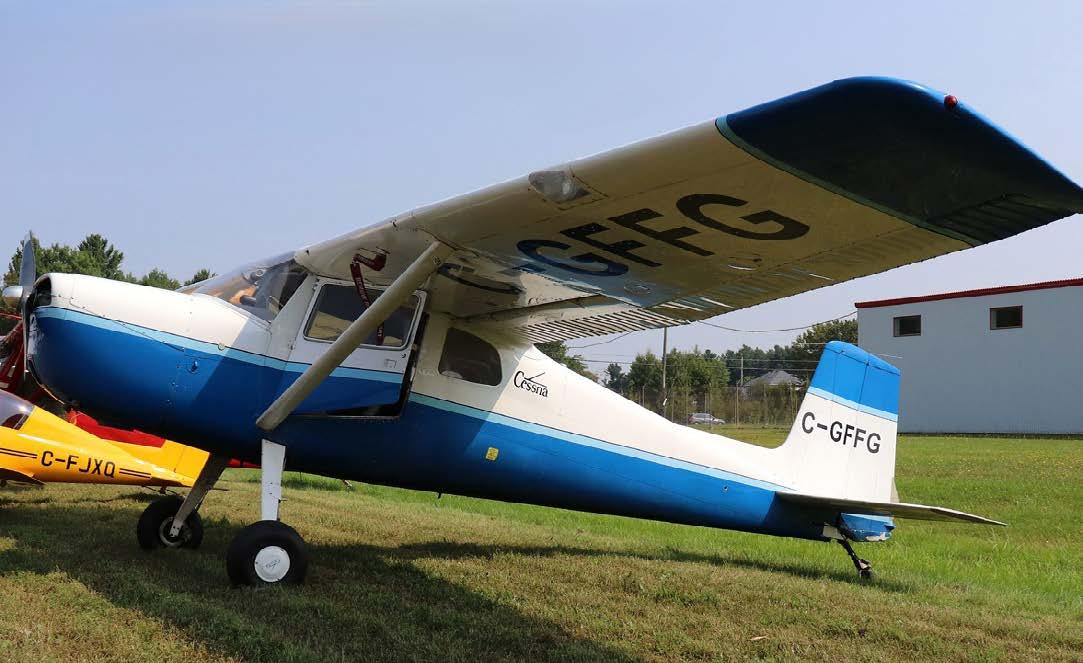
C-GFFG was a tailwheel modified Cessna 150, which changes fuel readings. Image Guy
DATE: 26 JULY 2023
On the morning of 26 July 2023, the pilots met at Lachute Aerodrome, Quebec, to conduct a day VFR flight to familiarise one pilot with tailwheel flying. There was a delay at the refuelling station, so they did not add fuel. They flew to Hawkesbury, Ontario, where the second pilot practiced takeoffs and landings. At about 11.30 local time they landed and shut down. About an hour later they took off and headed to Alexandria Aerodrome, Ontario. They arrived at 12.55 and completed two circuits on
Runway 25. They then repositioned for takeoff on the threshold of 25.
At 1310:57 a cockpit mounted GoPro showed that shortly after takeoff, and below 200’ agl, they had a momentary partial power loss. The instructor, in the right seat, took control and performed a 180° left turn for an approach to Runway 07.
During the turn there were two more partial power losses. They banked steeply and re-aligned about half-way down the runway. At 1311:35, with less than 1000 feet of runway remaining, the instructor applied power before touchdown and initiated a go-around.
Seven seconds later, during the climb, the aircraft was just below 100’ agl and the ASI was fluctuating between 50 and 60 mph when the flaps were retracted from 10° to the UP position.
Two seconds later the engine revs decreased from 2450 to 1300 rpm. The instructor began a steep right turn during which the airspeed decreased and the bank increased to about 45°.
Six seconds later the aircraft stalled, continued to roll to the right. It descended in a steep nose-down attitude and collided with terrain.
The instructor was fatally injured. The second pilot was critically injured and was transported to hospital
The aircraft was destroyed. There was no fire.
The weather was VMC with very strong, gusty winds from the westsouthwest.
Both pilots held appropriate licences,

ratings and valid medicals The instructor, with 1120 hours, held ratings for seaplanes and aerobatics. He also held a glider pilot license.
The second pilot held a PPL and had 122 hours.
The aircraft systems were examined and no malfunction was found. There were no signs of fuel leaks or contamination. 2.7 US gallons of fuel remained in the tanks.
There were no signs of catastrophic engine or mechanical failures.
Both pilots wore 4-point safety belts consisting of lap straps and shoulder harnesses. However, once the harness is tightened it limits arm movement, and some areas of the cockpit and instrument panel may be out of reach. The video shows that the instructor’s harness was very loose throughout the flight.
The 1962 Cessna 150B had been modified to tailwheel configuration.
The POH gives a wings-level, pow-
er-off stall, with the flaps at 10° of 53 mph. With flaps UP this increases to 54 mph. With 40° bank the stall speed increases to 62 mph; and at 60° of bank the aircraft stalls at 77 mph.
The stall warning sounded as they approached runway 07, after the l ow-level 180° turn. However, it did not sound before the final stall-spin. The investigation could not determine why it failed to work at this stage.
The POH requires pilots to visually check the fuel quantities, and to confirm this by checking the gauges. The aircraft’s calibrated dip stick had been broken for some time and was not available.
The investigation determined that pilots operating this aircraft rarely, if ever, used a dip stick. Instead, they either conducted a visual inspection of the fuel levels or relied on the gauges.
The total usable fuel was 22.5 US gallons (11.25 per tank), and the unusable fuel was 3.5 gallons (1.75 per tank).
The fuel gauges are marked E for empty, ½ for half full, and F for full, with graduations at ¼ and ¾. The gauge readings from the previous flight were estimated at ½, and slightly below ½. If these readings were accurate, this would give 5.6. gallons in one tank and slightly less in the other.
The gauges in this aircraft model are known to be inaccurate and unreliable [Jim’s emphasis].
For a daytime VFR flight, the Canadian regulations require the aircraft to carry sufficient fuel to fly to

the destination plus 30 minutes at normal cruise speed. The aircraft did not meet this requirement.
Given the weight of the occupants, cargo and fuel, the aircraft was overweight by about 69 pounds at the start of the flight.
Many fatal accidents have resulted from pilots attempting to turn back following an EFATO. This often leads to a stall or loss of control at low altitude.
The FAA recommends that180° turns be avoided and suggests using the best available landing area within an arc of about 60°.
The message here seems to be a matter of repeating the old warning about not turning back. How-
ever there’s quite a bit more to this.
First, let’s deal with this ridiculous, and oft repeated, message that you should avoid turns of more than X° following an EFATO.
Why on earth specify any number of degrees? If you are at 50’ your turn has to be very limited, and if you are higher than the amount of turn depends on the aircraft type, the wind, your skill and a herd of other factors.
In a Grob at 200’ you can circle back to your departure runway. In a Bonanza at 200’ your landing spot is directly ahead.
Why put numbers to it? You simply turn towards the best available field. It couldn’t be simpler. That’s what the RAF and the SAAF recommend. It makes sense.
Next, this modified and seemingly unloved Cessna didn’t stand a chance.
Unloved? Absolutely. The dipstick was lost ages ago and no one cared to replace it. It would have saved the instructor’s life.
And then there’s the word calibrated dipstick. Making a new one is a tedious, but critical job. You must drain all the fuel and then mark the new dipstick bitby-bit as you add say two gallons at a time. Here are some pointers:
1. The normal Cessa dipstick must be banned. It doesn’t read correctly for the tailwheel version.
2. The aircraft must be on level ground – fore-and-aft and side-toside.
3. Don’t expect the gauges to agree with your calibration – they are made for the level flight attitude .
4. Use metal or very hard wood for the stick – the fuel creeps up soft wood alarmingly.
5. Don’t varnish or paint the stick –the fuel may dissolve it.
6. Put a ‘T’ piece across the top so you can’t drop it in the tank. So it seems we have a classic stall-spin during an attempt to turn back following an EFATO. But there’s a lot more to this.
The engine didn’t fail – the pilots failed. They didn’t put fuel in at the start of the flight. They made the fatal mistake of being in a hurry. They couldn’t wait for the original holdup at the pumps. So this crash seems to have been caused by being in a hurry.
But wait – there’s more. What was the pilot thinking when he decided to do a go-around with a faltering engine? He had 1000’ of runway ahead and a C150 with full flap can get down and stopped in a very short distance.
And why retract the 10° of flap at low altitude and low airspeed during the goaround? That makes no sense.
Next, the instructor, who had both a glider license and an aerobatic rating, should have been acutely aware of the dangers of increasing bank while running out of airspeed.
It’s also possible the pilot may have survived had he tightened his shoulder harness correctly.
Perhaps the whole accident should be put down to the operator’s slack attitude to safety. When pilots trust their lives to fuel gauges that are known to be “inaccurate and unreliable” this speaks volumes about the operator’s casual attitude to safety culture. The statement that pilots “rarely if ever” use a dipstick, or even look in the tanks, underlines this view.
And, as a final indication that all was not well with the operation, we have the statement that the aircraft was over maximum gross weight by 69 pounds as well as being out of C of G.
Knowing your fuel quantity before takeoff is not a check it’s a life or death essential.
A calibrated dipstick is part of the life and death thing. It’s not only used for little aeroplanes – The pilots of Boeings and Airbusses do exactly the same thing. If they are not sure of the fuel quantities they use a dripstick which works the same as a dipstick but it is done from under the wing.
If airline pilots use this back-to-basics method then it’s good enough for you and me.j
Absolute Aviation has announced that they will acquire a stake in Century Avionics.
CENTURY Avionics is based near Absolute at Lanseria International Airport. Century has built an exceptional reputation over the past 47 years as a trusted provider of advanced avionics solutions for general, business, and commercial aviation.
With this expansion, Absolute Aviation seeks to complement its existing aircraft sales, support, and maintenance capabilities with Century’s specialist avionics expertise.
The current shareholders and leadership team of Century Avionics will remain fully involved in the business, continuing in their existing roles and responsibilities. Century Avionics will retain its identity and
operate as an independent company within the Absolute Aviation Group, ensuring continuity for customers, suppliers, and staff.
“This partnership aligns perfectly with our strategy to offer a complete aviation solution across the lifecycle of aircraft ownership,” said Neil Howard, CEO of Absolute Aviation.
Marc Robinson of Century Avionics joked, “This has been the longest courtship ever — we’ve been engaged for five years, and we’ve finally tied the knot!”
He added, “It made sense to align with Absolute Aviation, whose values and vision make them the ideal partner. We’re excited to grow into regions where Absolute already has a strong presence — Botswana, Mozambique, and Zimbabwe — with Kenya also firmly on the horizon.”
j


When I landed the Aztec at Moroni in the Comoros, there was a VIP car waiting on the apron to collect my passengers. I had my own driver and was told we would meet up later, as they had an afternoon meeting with the President Ahmed Abdullah.
Idid all the pilot things, fuel up the aircraft to the brim, landing fees, flight plan for the following day, cleaned out the sick bags (!) and picked up my night stop kit and went off with my driver.
The drive from the airport was about 20 minutes, on a very narrow winding road and climbing up towards the volcano Mt. Kharthala.
but the volcano just added a completely different feel. It rather felt like paradise. The trucks coming past us were very old French trucks, flat nosed and no bonnet. I had definitely flown back in time.
My driver’s name was Karim Ahmed. I couldn’t speak French but was delighted to hear that they spoke very good Swahili on the Island. I was feeling quite at home. Arriving at our destination, I thought to SA FLYER MAGAZINE -july 2025
I was fascinated at how tropical it was. Similar to our East African coast,
myself, what a lovely little hotel. I asked Karim, “Hi ni Hoteli yetu? He replied in Swahili saying no, this is the President’s guest house. I thought to myself, “Oh heck, I only packed blue jeans”.
both headed straight for the bathroom and they said Iris come and look. I went and they said, our rooms are exactly the

same, the bathroom has a bath, sink, bidet, but no actual toilet (or WC). So now the three of us went
Karim handed my kit to the Major Domo of the house, and I was shown to my room. The architecture was traditional Swahili Arab, very beautiful ,with views of the ocean and garden. I was given the middle bedroom in the guest house. Second Secretary was on my left and his Excellency on my right. There was a polite knock on the door and His Excellency was standing there with Issa Moosa. They had big smiles on their faces and asked if they may have a look at my room. Of course, come in. They
ABOVE: The Piper Turbo Aztec had the range and speed for the over-ocean trip.
hunting and found the loo down the passage. We could hardly control our laughter.
We were given a delightful lunch of fresh fish and all the fruit the island could offer. They were being collected at 15.00 to go and meet the President, and I could relax and enjoy all this magnificence to myself.
Both men went off to change into their traditional Omani outfits, consisting of their long Dishdasha, the Bisht overcoat, the beautiful head dress Massar and finished off with the striking silver Khanja dagger. I told them they both looked completely magnificent. They rewarded me with wonderful smiles.
I went out into the garden and sat on a large piece of coral, looking at the perfectly clear ocean. The little beach in front of me had beautiful white sand and the beach to my left had perfectly beautiful black sand. This was all the volcanic influence.
I was sitting in perfect harmony with the world eating my mango. Having just dropped the pip into the water, I was busy timing how long it would take to land at the bottom when I was interrupted by a young child who was sitting on another rock below me. “Hey wewe Muzungu” I replied, “Hey wewe Mwafrika” His other comment to me was “Wewe Whiskey” I replied “Apana Vodka”. That was when he decided to give up on me and find another spot.
My two gentlemen returned in high spirits; they changed into more casual

ABOVE: Matwara was the stepping-off point from the African Continent.
clothes. We were all being escorted to dinner at one of the tourist hotels by a representative from the President’s office. We were quite happy about this as there was no alcohol available at the guest house so we could at least have a
the last 200 nm would be across the ocean
cold beer and some wine with dinner.
I remember His Excellency handing me the wine list and asked me to choose the wine. I told him, I would if he could pronounce them. We all agreed on the bottle that sounded the most elegant in French. I remember it being a joyful evening, interesting conversation about the history of the East African coast and how lucky I was to be there with them in the Comoros.
The following morning on our way to the airport, we stopped at a bakery and they must have bought at least 20 baguettes to take back with us.
We were blessed again with wonderful weather for our return flight to Nairobi. I did the same route, direct to Mtwara in Southern Tanzania and up the coastline to Mombasa. We stopped to refuel and carried on to Nairobi. We departed Moroni at 0730Z (1030 Local) arriving at Mombasa 1110Z (1410 Local). Departed Mombasa 1245Z and arriving Wilson 1540Z. A truly memorable, wonderful flying safari.
I enjoyed my French baguette that evening, at home, feet up in front of the fireplace.j



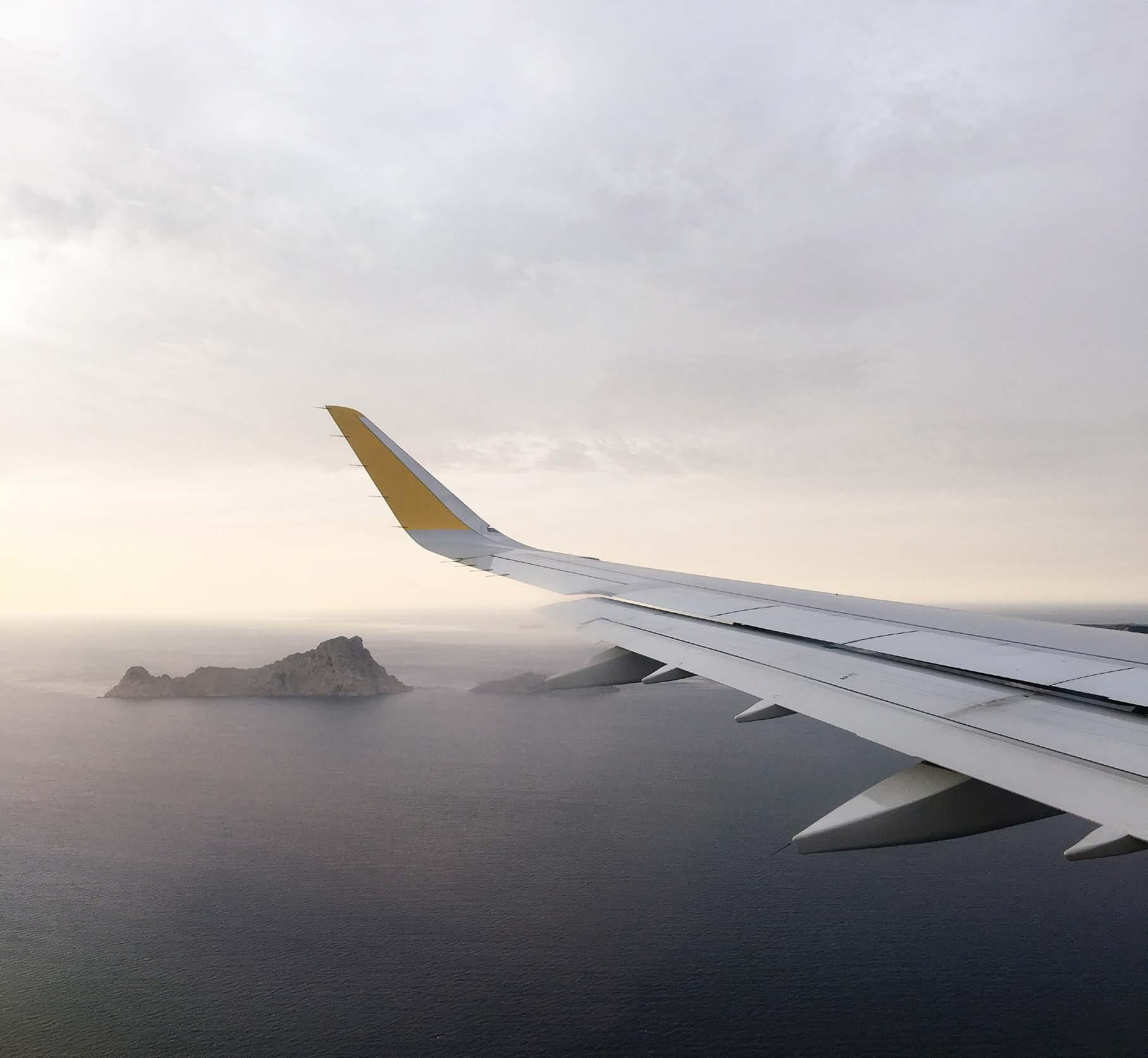


































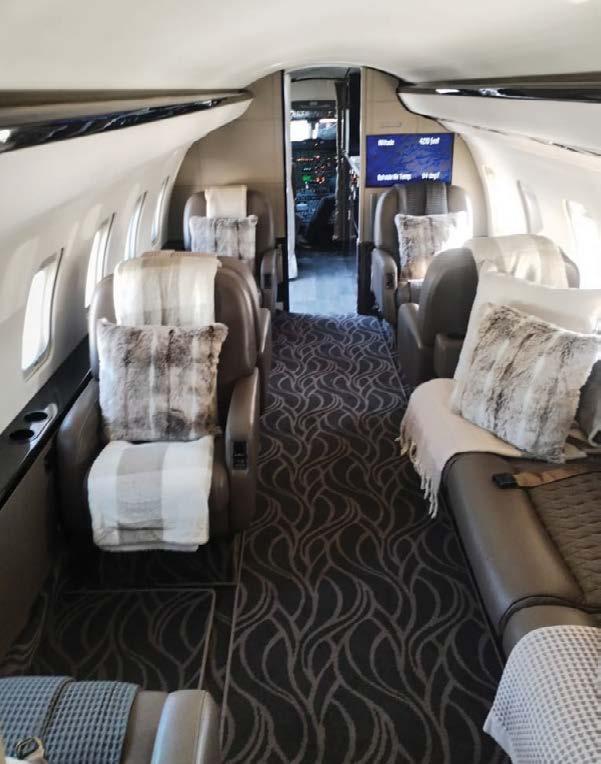



05/July/2025 Taildraggers Warmbaths Bela Bela Limpopo 12/July/2025 EAA gathering: Featuring Scully Levin Rand Airport Germiston 12/July/2025 Pietermaritzburg Air show

18 - 22 July 2025 Royal International Air Tattoo Fairford UK https://www.airtattoo.com/ 21 - 27 July 2025 EAA AirVenture Oshkosh
Neil Bowden: 084 674 5674 info@airadventure.co.za 02/August/2025 Wonderboom Air Show
09/August/2025 Bethlehem Airshow
30/August/2025 Botswana Airshow Francistown
12- 13 September 2025 EAA Pancake Fly-in
Silver Creek 20/September/2025 Rand Airshow
Rand Airport Germiston 27/September/2025 Polokwane Airshow
04/October/2025 Krugersdorp Air Show 01/November/2025 Newcastle Airshow 17-21 November 2025 Dubai Airshow UAE

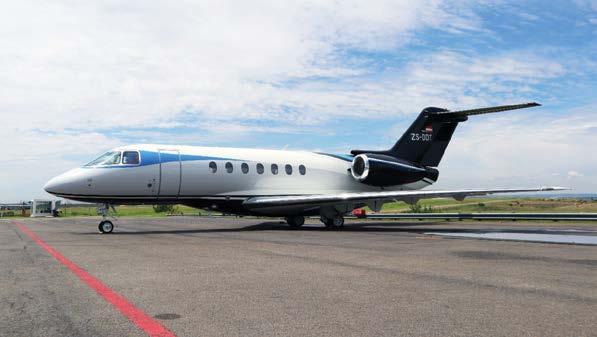
https://www.dubaiairshow.aero/ 07/December/2025 ICAD Airshow
20 September 2025 Rand Airshow
Rand Airport Germiston 17 - 21 November 2025 Dubai Airshow UAE https://www.dubaiairshow.aero/




I was ecstatic to be invited to join a rhino & lion capture operation in the Karoo National Park by fellow pilot and honorary ranger Remco van Aalst.

THE ranger’s mountaintop accommodation was strictly self-catering so we had to bring all our own supplies, including bedding and food. That ruled out flying there in our Pioneer 300, and so began a 10-hour road trip, through an endless procession of trucks, even on a Sunday.
We followed honorary ranger Christo van Zyl up a steep and winding mountain pass, to a beautiful stone clad bunker perched on the edge of the escarpment. From there, the Karoo unfolded in vast silence until it melted into the hazy indigo outline of the Langeberg mountains on the distant horizon.
The following morning, we were up at 04h00 to descend the mountain to meet the game capture team by 07h00. A recent wildlife count had pinpointed our target rhinos. The Section Ranger, Riaan Nel, explained the purpose of the annual count was to keep species populations aligned with the park’s ecological carrying capacity.
At our destination, where we met wildlife veterinarian Dr. David Zimmerman, a Senior Vet for the Southern Parks. Based in Port Elizabeth, David had made the journey up to the park in order to accompany the subject of the day, a 13-year-old bull rhino to its new home.
Relocating bulls when they reach sexual maturity is vital to prevent inbreeding and to strengthen genetic diversity across the species.
ABOVE: Refuelling the Squirrel for a hard day's work. BELOW: The magical Berg Hut.


OPPOSITE PAGE: Dr Angela Daly getting ready.
Anita de Klerk arrived towing a trailer stacked with barrels of Jet A1 fuel for the Squirrel AS350 B3 helicopter piloted by her husband, Dawie. Their company, Krompoort Helicopter & Game Capture, has secured the SANParks contract for wildlife capture and relocation in the Eastern Cape.
We heard the chopper before we saw it – its rotors thrumming over the ridges like a pulse through the wilderness. When it landed, vet Dr. Angela Daly stepped out to join David for final planning. She would be darting the animals from aloft.
The helicopter found the group of rhino hiding in a thicket and began circling the area. Suddenly, the bull broke from cover. Angela’s moment had come. The dart struck home, and the powerful sedative began to take effect.
Even in surrender, the rhino

fought to stay conscious. But the drug prevailed and he finally slumped onto open ground; fortunately in reach of the transport vehicle.
Then everything moved at speed. The team blindfolded the immense creature, secured its massive legs, and Angela proceeded to take blood, parasite, and hair samples for the global database. A microchip was fitted and an ear was notched, a necessary, if invasive, form of ID.
As I laid my hand on his surprisingly soft hide, I was swept into a forgotten age, when creatures like him roamed a primeval Earth, their massive forms
moving through lush forests long before humankind had taken its first breath.
Emotion caught in my throat. There is now a terrible irony in what it takes to protect this species. Yet without intervention, extinction creeps ever closer.
The warning was clear that it would be the most dangerous part of the exercise when the antidote was administered. They weren’t exaggerating. One and a half tons of unpredictable power was up in a flash; remarkably agile for a behemoth of that size.
The team worked fast, guiding him into the crate before he had time to react. In order to keep him placated,
the hood would remain on for the remainder of the journey, the accompanying vet ensuring his safety throughout the journey.
The remainder of the day was spent notching younger rhinos; smaller but still formidable.
The next morning was lion day. Two lionesses needed new collars, but earlier attempts on foot had failed. Not even the tortured sounds of distressed spring hare recordings or the scent of a fresh warthog carcass could lure them out of the thick bush they were hiding in. The risk was that the felines would bolt into the mountains, which would thwart the initiative altogether.
This job called for big guns, the Squirrel. At R28,000 per hour, it was an


expensive commitment, but the only viable option.
Watching the chopper flush the lions from the thickets was pure adrenaline. In 30-knot winds, Dawie flew with precision, while Angela, hanging from the door, waited for her chance and planted the first dart in the unsuspecting feline’s rump.
The other lioness took much longer to be persuaded out of her hiding place. I had a brief glimpse of a tawny hide as she ran into a gulley. Dawie and Angela had anticipated this and reacted immediately; the lioness stood no chance against the vet’s perfect aim.
Seeing lions without having the protection of being in a car is a visceral experience. The sleeping predators radiated danger – one even growled mid-procedure, sending seasoned rangers leaping in alarm.
LEFT: Laura McDermid, Honorary Ranger Remco van Aalst (wearing the used lion collar) and pilot extraordinaire Dawie de Klerk.
A lion growl reverberates through every cell of your the body, a stark reminder of our place in the food chain, where power is measured in instinct, not intellect. With samples taken and new collars fitted, the antidotes were administered. Dawie offered me the co-pilot’s seat for the return flight and I leapt at the opportunity!
Whilst we waited for the big cats to wake up, Dawie shared his aviation story. His journey began in a game capture chopper, where he honed his marksmanship and love for flight. Having sat in the left seat for hundreds of hours, he became adept at flying
helicopters and eventually saved up enough money to do his PPL.
Despite already being a proficient pilot, Dawie still had to do the 50 hours for his PPL, which he completed over a period of nine weeks, followed by his CPL which kept on eluding him, due to a glaring error in one of the exams; a problem he repeatedly raised with the CAA, but to no avail.
A day came when he finally had the opportunity to address his concerns with the right people. At around seven foot tall, Dawie is not a man to be trifled with. It was his height, coupled with a chance encounter with Ms Poppy Khoza that finally got Dawie the resolution he needed for his exams. The rest, as they say, is history.
He started Krompoort Heli & game under the CGOC umbrella. Dawie clocked 3,700 hours on the Robinson 44 in just three years, and is completely at home behind the cyclic. His eyes light up when he talks about the R44. What he loves most about them is their reliability and manoeuvrability; attributes few other helicopters can match.
With the lionesses suitably awake, Angela joined us on the flight back, calm and composed after another demanding day.
With the doors off the winter Karoo air rushes through the open cockpit, but I feel too exhilarated to be cold. Dawie skims over the mountain tops,
then dives into the gorge, deftly manoeuvring the machine just metres above a winding riverbed.
Back on the ground I had the opportunity to speak to Angela. She was born in South Africa but moved to Germany with her parents as a young girl. She completed her veterinary degree abroad but the pull of the African bush never left her and so she returned to pursue her true calling, wildlife medicine.
Her career has taken her from the Kruger National Park to the Pretoria Zoo and now to the Southern Parks, where she participates in mass
the incredible people left me deeply inspired
capture, relocations and population control;. She is currently busy with her PhD on giraffe anaesthesia.
Her humility is striking. When I praise her accuracy; seven animals darted, all clean hits, she brushes it off with a laugh, claiming she’d never match Dawie’s aim.
Over five years of collaboration, Angela and Dawie have become a symbiotic team. Every capture demands perfect timing: the angle of
Air and land team up to flush the lioness out.

the aircraft, the speed of the animal, the terrain, the wind. There’s no room for ego; only trust and shared instinct.
When I ask Angela about her family life, her voice falters slightly at the mention of her 10-month-old daughter, Alaska. Her eyes shimmer with emotion as she describes the ache of leaving her baby behind each time duty calls.
She is a woman caught between two great loves: motherhood and the wild, and yet she has no plans to exchange the unpredictability of the bush for the steadiness of private practice.
she is, a new mother, still leaning out of helicopters, still working with dangerous beasts; not for glory, but for the sake of the animals’ welfare.
All the incredible people I met during this time left me deeply inspired. Their work may unfold far from the spotlight, but it is nothing short of heroic; protecting the fragile thread of life that binds our ecosystems together. In their hands lies the future of entire species, and the legacy they are shaping will echo not just for generations, but across the very landscape of conservation itself.
I didn’t think my admiration for her could grow, but it did. Here j
info@taxfinaccounting co za
Eltimon: +27 65 705 7274
Bella: +27 79 570 3757
www.taxfinaccounting.co.za


de Villiers
Engelbrecht (with a small ‘d’) took over the CEO role in April at Airlink after Rodger Foster stepped down after an illustrious 24 years at the helm. Guy Leitch (GL) asked de Villiers (dV) how he is managing to fill Rodger’s very large shoes.
FLYER MAGAZINE -july 2025
GL: WHAT WILL RODGER FOSTER’S ROLE BE GOING FORWARD? IS HE LETTING YOU GET ON WITH THE JOB OF BEING CEO, DESPITE HAVING HELD THE REINS FOR 30 YEARS?
deV: Rodger passed the baton to me after a thorough handover transition in which he stepped away from the executive day-to-day management of the company. Rodger remains a shareholder and a non-executive director. His institutional and industry knowledge are invaluable at a board level. As you know, Rodger is a consummate professional and has allowed me and the executive team to simply get on with the job.
My role is to lead Airlink through its next chapter. We are currently in a period of consolidation but have identified some opportunities for further expansion, which we are exploring. Airlink is known for its cautious but thorough approach, so whatever we embark upon, be it route, network or fleet expansion, must make sense commercially and financially.

vote of
FLEET GROWTH: YOU HAVE IN THE PAST FEW MONTHS BEEN RAPIDLY GROWING YOUR FLEET. IS THIS ALL FOR ROUTE AND FREQUENCY EXPANSION OR ARE YOU RATIONALISING THE FLEET AND MAKING IT YOUNGER?
The deliveries over the past two years have been primarily
for our network and schedule expansion but it’s no secret that we would like to operate a harmonised fleet with a consistent cabin configuration. This will allow us to provide a consistent onboard product to our customers. A standardised configuration would also reduce our overheads in terms of training, spare parts inventory, maintenance and servicing.
We are however considering various fleet options to lower the average unit costs of our operation to effectively compete with our domestic and regional competitors.
BILATERALS: SOUTH AFRICA IS STILL EXPERIENCING CHALLENGES WITH ITS LICENSING COUNCILS – HAS THIS BEEN HOLDING YOU BACK?
The Department of Transport negotiates South Africa’s bilateral air services agreements while the two councils, appointed by the transport minister, are tasked with processing and issuing domestic and international licences respectively.
Airlink and other operators were invited to meet the new councillors as part of their induction. They should now be up to speed and ready to address outstanding matters left unresolved by their predecessors, including our applications.
HOW IS THE QATAR BUY-IN BEDDING DOWN? HAVE THERE BEEN ANY DIRECT BENEFITS TO AIRLINK?
We are just nine months into the relationship, so we are still learning a lot about, and from each other. Nevertheless, good progress is being
made with various workstreams, such as commercial alignment, loyalty, and career path development, to name a few.
Qatar Airways’ equity investment is a vote of confidence in our business and its longer-term prospects, as well as South and Southern Africa.
HAS THE QATAR BUY-IN USEFULLY STRENGTHENED YOUR BALANCE SHEET AND GIVEN YOU ACCESS TO CHEAPER FINANCE?
Qatar Airways 25 percent share in Airlink has certainly strengthened the company’s balance sheet and provides us with leverage when negotiating with financial institutions and service providers.
ATNS HAS HAD WELL PUBLICISED PROBLEMS WITH PROCEDURE CANCELLATIONS. CAN YOU GIVE AN UPDATE ON THE NUMBER OF FLIGHTS DELAYED AND CANCELLED?
Between 20 July 2024 and 30 April 2025, 7,667, or 6%, of our flights were delayed, with a cumulative delay time of 182,354 minutes (3,039 hours) as a result of unavailable Instrument Flight Procedures (IFPs) and traffic flow restrictions caused by staff and capacity shortages at ATNS.
Average departure delay time was 25.5 min with average arrival delay time of 22.6 min.
RWY 21 operations at JNB caused
the most delays due to the withdrawn departure procedures (SIDs) that led ATNS to increase spacing intervals between departing flights.
In addition, we had to cancel 108 flights and had 30 diversions. The most severely-affected airports for cancellations were PTG, ELS, KIM, GRJ and RCB and these for diversions: KIM, GRJ, UTT, PTG, RCB, ELS and UTN routes.
Besides compromising schedule integrity, this also translates into a material irrecoverable cost to cover the extra fuel, aircraft servicing and maintenance, airport and ATNS fees; as well as taking care of our customers.
For about four years running Airlink consistently recorded the best On-Time Performance (OTP) at ACSA-managed airports, until ATNS withdrew around 320 Instrument Flight Procedures (IFPs) in mid-July 2024. Airlink is now consistently ranked as the second best OTP carrier across all ACSA-managed airports, by a slight margin, even though Airlink operates to those marginal airfields most-affected by ATNS’s continued failures. It is a metric we work on diligently to achieve and sustain, because schedule integrity is the keystone of Airlink’s business, and
we aim to lead the pack again.
The delays caused by the shortage of controllers along with those attributable to the withdrawn IFPs have skittled all carriers’ OTP. We adapt our operations to preserve our schedule and to avoid or mitigate the impact of delays, diversions and cancellations. Besides inconveniencing our customers and burdening us with additional costs and operational constraints, ATNS’s continued service failures also cause immense reputational harm which is difficult to quantify in monetary terms.
Frustratingly, ATNS recently pushed out its self-imposed deadline for clearing the backlog of IFP approvals by another year, to the end of 2026. Given the sheer volume of IFPs that need renewed approvals and the internal systemic problems at ATNS, the previous deadline was clearly unrealistic. The situation is beyond

airlines’ control, and we must trust that the interventions being made by the Transport minister and the task team she appointed, will see the expedited renewal of all of the IFPs including those IFPs that will be due for reassessment in the coming months. Also worrying is ATNS’s ability to recruit and retain sufficient experienced and skilled air traffic controllers as well as airspace and procedure designers. Airlink, like other carriers, must continue to grow to meet the steady demand for air travel to, from and within the region but we can’t if the airspace management infrastructure cannot cope and accommodate current levels of operation without causing chokepoints, delays and diversions. What the industry is grappling with is nothing short of economic sabotage. Airlink is just one cog – albeit a vital one for many of the markets it serves – in the
region’s bigger economic machine. As long as ATNS is a spanner in the works, all carriers (i.e. not just Airlink), our customers, their businesses, the economy and the ability to create desperately needed jobs, will remain constrained.
THE
Airlink has made no secret of its intention to acquire and operate a modern fleet of aircraft best suited to its unique business model, the markets it serves and the variety of destinations it operates to. To this end, we maintain ongoing discussions with lessors and aircraft manufacturers to keep abreast of market developments and identify opportunities for suitable aircraft that will support our growth.
That said; Airlink will never deviate from the most basic rule of business,
i.e. to trade and operate within its means, without becoming a burden to its shareholders. If such opportunities present themselves, we will only proceed if Airlink could afford the investment within the constraints of its balance sheet.
From time to time we have made use of short-term ACMI leased 737 Classics, most recently in 2023 to address a capacity shortfall on some of our Durban and Gqeberha (formerly Port Elizabeth) routes. Airlink is not set up to operate Boeing or Airbus types, but the experience was a very useful exercise that gave us insights into the costs and economics associated with operating the larger-gauge equipment. Right now, we have no foreseeable need to wet-least 737s as we now have sufficient aircraft in our own Embraer E-jet fleet to cover any short-term capacity gaps.
Throughout its existence Airlink has been a very good training academy for pilots. Although we offer market-related competitive salaries and benefits, we have always been vulnerable to pilot poaching and migration. Sometimes it is more pronounced than others, but it is mostly prevalent among senior First Officers and younger Captains who want to pursue opportunities we might
not be able to provide. It’s an unavoidable industry-wide reality for carriers operating regional aircraft when pilot remuneration is tied to the dimensions and mass of the aircraft they fly.
International carriers appreciate the quality of Airlink’s training standard and the proficiency of our flight deck and cockpit crew, so we remain vulnerable in that regard. Our flight operations and human resources departments are however very resourceful when it comes to recruitment and the identification of talent to ensure that we have continuous supply of aspirant aviators.
Airlink is a network carrier in terms of the breadth of its network, depth of its schedule, reach of its distribution, and extent of its commercial relationships with international long haul carriers. It just so happens that it operates equipment categorised as “regional” aircraft. We may be in a phase of consolidation right now, but Airlink has always ventured where others fear, and we will certainly be expanding our domestic and regional presence in the not too distant future.
j
The month of May saw strong growth, with 17 new aircraft registered and only four deleted.

THE local airlines continue to grow their fleets with Cemair, Safair and SAA all adding another plane each to their fleets. Cemair has registered a CRJ700 ZS-CMX (10246). It would seem that Cemair is reallocating registrations in their preferred ZS-CM* registration block as this particular registration was previously allocated to another of their CRJ700s, c/n 10303, that is currently on lease to MIAT Monglian Airlines with the Mongolian registration JU-1700. The “new”
ZS-CMX was previously operated by Nepal’s Shree Airlines as 9N-AMO and delivered to OR Tambo International Airport on 31 March. I also spotted Cemair’s CRJ900, ZS-CMZ operating domestic schedules painted in full MIAT Mongolian Airlines livery in early June so I assume it will soon depart to Central Asia.
Boeing 737-8KN ZS-ZWW (26065) takes up the registration of another B737-82R (40721) previously operated by Comair until the carrier ceased operations in 2020. This “new” ZS-ZWW was previously operated by Dubai-based low cost carrier Flydubai as A6-FGJ. It was repainted into FlySafair livery in Dubai and took up temporary Cayman Island registry as VQ-CAE. The aircraft was ferried from Dubai to OR Tambo International Airport - via Mombasa - by Nomadic Aviation with flight number OMD104, arriving at its new home on 24 April.
The third airliner is an Airbus A320-232 ZS-SZM (5461) for SAA, which is showing steady growth with
a fleet of Airbus jets. This former China Eastern operated jet was delivered to South Africa on 15 May registered 2-BSSO and should soon be entering scheduled service.
Two Beech 1900D airliners are also registered: ZS-BGO (UE-311) and ZS-MJH (UE-373). ZS-BGO is a 1996 model previously operated by the Queensland Police Service as VH-PSK. The plane arrived at Lanseria on 17 March at the end of a multi-stop ferry flight from Australia. It is believed it will join the Barrick Gold corporate fleet. The second 1900D, ZS-MJH is a recent import from Malaysia where it operated as 9M-STL for MHS Aviation. It is not know who the new operator will be.
A pre-owned Bombardier CL350, ZS-SLA (20549), is registered and takes up a registration previously allocated to an SAA Airbus A340-212. The jet was delivered to Lanseria as N800CC on 1 May and is believed to be sold to a Western Cape based owner. I am also led to believe that another Bombardier Challenger 300 will also soon be delivered to a South African owner, so watch this column for an update.
Two of the sleek Italian designed and manufactured Blackshape BK160TR Gabriéls have been imported and registered ZS-BSA and ZS-BSG. Hopefully our readers can let us know who has bought these aircraft and if they will be privately owned or used for flight training?
Two helicopters are registered this month: one of the ever-popular Bell 407s and a 2006 Leonardo (formerly





AgustaWestland) AW139. The AW139, registered ZT-HRH has, according to posts on the FlyAfrica Facebook page, been bought by a well-known Johannesburg business man who already operates a Bell 430. It was delivered to Lanseria in April and has since been repainted into an overall black livery and will also have a new executive interior fitted prior to its entry into service. The helicopter was imported from the USA as N139CH but was previously operated by a corporate client in Mexico with the registration XA-CPX.
The final two type certified aircraft registered this month are a Cessna 172K, ZS-TAV and, unusually, a fifty year old Schempp-Hirth Standard Cirrus glider, now ZS-GHF.
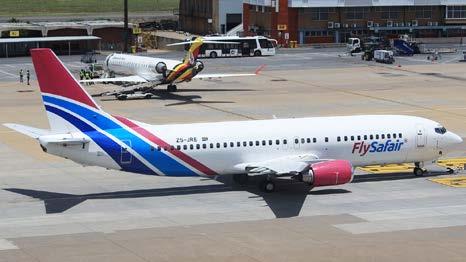
aircraft this month is a B&F Technik FK9 Mark VI, ZU-KAZ.
Finally, four aircraft are deleted. First is a former Safair operated Boeing 737-4Y0, ZS-JRE that was recently scrapped at OR Tambo International Airport after retirement from active service. This 1992 manufactured jet was delivered new to Turkish Airlines in June 1992 and after a short spell with Thai low cost carrier Nok Air, it joined the Safair fleet in 2014 until its recent retirement.
Five non-type certified planes are registered. The South African favourites are well represented with one each Sling TSi, Sling 2, and Savannah S registered this month. Robin Coss Aviation has also delivered an RV-10 while the final j
The remaining deletions ae a Tecnam P2006T that is exported to India, a Piper PA-30 Twin Comanche ZS-LKC that has gone to Argentina and a Bell 206L-4 Longranger that moves across the border to Botswana.

ZS-BSA
ZS-CMX 5/27/2025 Bombardier Inc.
ZS-GHF 5/21/2025
ZS-ZWW




NAC (021) 425-3868 www.nachelicopterscapetown.com

Cape Town Helicopters (021) 418-9462 www.helicopterscapetown.co.za
GEORGE
Titan (044) 878-0453 www.titanhelicopters.com
LANSERIA
NAC (011) 267-5000 www.nac.co.za
Leading Edge (013) 741-3654 www.leadingedgeaviation.co.za
NAC (011) 345-2500 www.nac.co.za
VIRGINIA
BAC (031) 569-1531 www.bachelicopters.com a
NAC (031) 944-1678 www.nac.co.za

ARRIVE ANYWHERE
We now inhabit a world where disruption is not the exception, but the rule. Welcome to the age of permacrisis.
THERE was a time, not so long ago, when risk managers and business leaders could afford to think in terms of cycles, upturns and downturns, crises and recoveries. The world, for all its unpredictability, still seemed to offer the promise of “normal” just around the corner. But as we look back over the past five years, that promise has faded into myth.
The story of this transformation is not just a tale of global headlines, but one that is written into the daily lives of ordinary people, the
operations of companies, and the very fabric of our societies. It is a story that begins with the COVID-19 pandemic, a crisis that swept across borders with breathtaking speed, exposing the vulnerabilities of our interconnected world. Airports fell silent, fleets were grounded, and in the aviation industry, once a symbol of boundless possibility,
spark that lit a tinderbox of existing stresses, political instability, economic inequality and environmental degradation. As the world reeled from the health emergency, new crises emerged, and old ones deepened. The recent wars sent shockwaves through global food and energy markets, driving up prices and making the simple act of putting food on the table a daily

ACSA
to afford electricity, are not just statistics, but a mirror of the anxiety and hardship etched into countless households.
Meanwhile, the climate crisis, once spoken of as a distant threat, has become a relentless presence. Hurricanes battered Miami, floods drowned Bangladesh, and the burning of fossil fuels continues to push the world closer to irreversible change. For those of us in aviation, each storm, every turbulence experienced, is a reminder that our runways and routes are at the mercy of forces far beyond our control.
This is the essence of polycrisis: not just the collision of multiple risks, but their entanglement, their ability to

and the stakes are existential.
This is the essence
amplify and prolong each other until crisis becomes a permanent state. It is a reality that challenges the very foundations of how we manage risk. The old playbooks built for isolated shocks are simply not enough. We are now called to lead and plan in an environment where uncertainty is constant,
At Airports Company South Africa (ACSA), we have learned that resilience cannot be left to chance. The well-being of our employees is not a side issue, but a central pillar of our ability to weather the storm. Our Employee Value Proposition is designed not just to support staff during a crisis, but to help them build the financial, mental, and personal resources to endure and adapt. Financial awareness programmes, mental health support, and practical training are no longer perks, rather, they are lifelines.
Yet the lesson of permacrisis is not just about internal policies. It is about a mindset, a willingness to accept that the world will not return to the way it was, and that leadership now means embracing
- july 2025
complexity, fostering seriously agile adaptability, and building community networks of support both within and beyond the organisation. This means working with all airport communities in fostering partnership rather than competition. It means understanding that the fractures we see between nations, within economies, across communities are not abstract problems, but living realities that shape every decision we make.
For risk managers, the challenge is to move from a defensive crouch to a posture of proactive, creative engagement. We must become students of the system, constantly
scanning the horizon for emerging threats, but also for unexpected opportunities that may emerge from these threats. We must build partnerships across sectors, share information, and invest in the
long-term resilience of our people and infrastructure, even when the immediate pressures tempt us to cut corners. Most of all, we must lead with empathy and

ABOVE: Dr Mpho Modisane.
clarity. In a world where crisis fatigue is real and trust is fragile, transparency and moral courage are as important as technical expertise. We owe it to our employees, our customers, and our communities to be honest about the risks we face, and to invite them into the conversation about how we respond.
The age of permacrisis is not a passing phase. It is the new reality. But within it lies the possibility of renewal if we are willing to rethink what it means to manage risk, to lead, and to care for one another. The skies may be turbulent, but with courage, creativity, and compassion, we can chart a course through the storm.
Laurie Less, Group Executive Corporate Services
Dr. Mpho Modisane, Group Manager Risk Management
FlySafair has been recognised as the Best Low-Cost Airline in Africa at this year’s Skytrax World Airline Awards.
THIS marks the fourth time the airline has received top honours in this category in recent years.
Each year, Skytrax conducts the largest airline customer satisfaction survey to determine the best airlines in the world across 80 categories. The goal is to allow customers to share their thoughts on what makes an airline great.
“To be recognised by Skytrax is proof of our team’s dedication and hard work,” says Kirby Gordon, Chief Marketing Officer at FlySafair. “For more than a decade, we’ve worked
tirelessly towards providing South Africans with affordable, hassle-free, and on-time travel. It’s always encouraging to see this commitment to our customers and the industry as a whole recognised on a global stage.”
Over the years, the airline has picked up awards in various categories, including its on-time performance (OTP), which is a point of pride for the airline and one that underpins its success.
FlySafair’s OTP rating for May was 95.45% and has not dipped below 93% in 2025.j






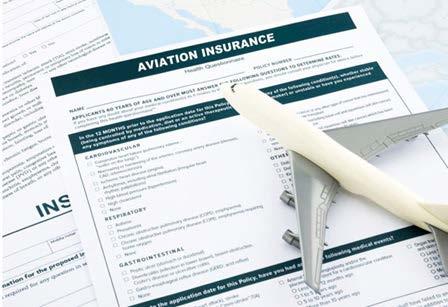

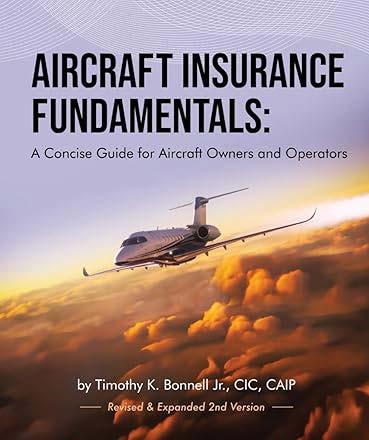


James Godden, head of Santam Aviation, is in the thick of things with the imbroglio over the 12 -year engine rule. He is daily having to ground numerous aircraft for having engines older than 12 years since major overhaul. Aircraft values have fallen dramatically as those with engines older than 12 years are almost impossible to sell and are thus being insured on just ground risks cover. Godden says that it is reminiscent of the dark days of the industry-wide aviation grounding due to Covid-19.
SANTAM has around 4,000 aircraft on cover, which account for R150million of SA’s annual R500-million aviation premiums, making Santam the largest and most experienced specialist South African aviator insurer for the past four decades.
With the benefit of over 30-years of experience as an underwriter, Godden is
instructors as aging expertise leaves the market.
Godden assures a sceptical industry he is looking for more ways for Santam to continue to pay claims in an environment that is heavily dictated to by legislation and compliance, and which can be restrictive for aviators. “We cannot write a policy outside of aviation law no matter

and is bound by the CAA’s certificates of airworthiness that confirms an aircraft is airworthy. No insurance claim can be processed unless the paperwork is in order. This is to ensure that safety in the skies is at the highest levels of compliance with various Acts that guide the safety and security of the civil aviation industry.
For those making a claim in contravention of law, or without the required certifications, the consequences may be financially crippling to the policyholder. “Even a usually straight-forward claim like damage caused by taxiing into a runway hole or clipping a hangar door will be rejected if the
paperwork is not in order. And obviously the impacts are devastating if there is a loss of life,” says Godden. There is however another aspect to rejection of a claim under such circumstances; in not paying claims an insurer’s
reputation is at risk, regardless of how genuinely sympathetic or motivated it is to settle. Godden and his team are always seeking ways to reduce financial stress for clients, which includes private/corporate, recreational, aerobatic, agriculture, charters, surveillance, tracking enterprises.
During the COVID lockdown, Santam switched clients to ground insurance, which comes with another set of challenges. Grounded aircraft are vulnerable to rust

damage from being inactive, and parts have variable lifespans, which puts further pressure on maintenance obligations.
After the Covid grounding ended there was a spate of claims Godden asked, “Is it really down to Covid impacts such as pilots not able to fly their mandated hours? For example, if a pilot hasn’t flown in six months, there could be a condition forcing the pilot to return to flying school and complete a certain number of takeoffs and landings with an instructor,” says Godden, who reveals that 90% of claims are related to pilot error and more particularly those are related to takeoffs and landings.
The most basic of cover, and which is dictated by law, is third party/passenger
BELOW: Pilot error is still the primary cause of accidents - this pilot landed on the wrong airstrip.
insurance, but the greatest liability is when the aircraft is in motion, which requires comprehensive cover. “That premium is variable dependent on the risk exposure, such as: purpose of the flight; the level, age and experience of the pilot; the type of aircraft; technical issues and history of the model; economic factors driving the market; and area of operation.”

“Risk underwriters understand aircraft and flying law, which although is not a prerequisite to working in aviation insurance, elevates our expertise. It’s a differentiator for Santam Aviation” Godden says.
Similarly the organisation uses independent and highly knowledgeable claim assessors, who in tandem with the CAA, explore the reasons for an aviation incident or accident, even those that occur outside of the local claim environment.
“It’s a small industry really, so when there is an accident, everybody hears about it and we, more than most, feel an obligation to examine whether the
cause should or could impact on how we underwrite. For example, if a particular component regularly fails resulting in too many claims, the entire industry has to consider introducing a higher excess, which in turn puts pressure on the manufacturer to correct the problem, and/or the policyholder is burdened with additional costs.”
South African aircraft owners are already burdened by most aircraft being dollar-denominated because of the Rand’s volatility. “A claim on a R1-million plane bought at 10:1, will pay out the R1-million, but if the exchange rate at the time of claim is 18:1; the policy-holder is short on R800,000 to replace the aircraft.”
Godden says this also applies in the rest of Africa, where exchange controls and securing premiums is trickier. “There are dangerous environments in Africa for all industries, and flying is not exempt,” says Godden. “Rural dirt strips with random cattle gatherings; lack or no aviation infrastructure; extreme weather; and dangerous and volatile conflict.”
For insurers the immediate opportunities lie in developing a sustainable long-term approach and nurturing beneficial relationships. “The biggest need is to listen and respond to the market. To provide the right representation in a changing market, to influence as much as possible a low risk profile and continue to motivate for safety in aviation.
DJA is an aviation insurance broking specialist and we provide aviation coverage for individuals and companies. Our brokers will create a portfolio specific to your needs –balanced between cost, coverage, service and security.
DJA Aviation (Pty) Ltd was originally formed in 1969 and became dedicated to aviation insurance in 1976. DJA’s team is South Africa’s largest dedicated aviation insurance broking firm.
With a team of highly experienced aviation insurance specialists, it’s the greatest concentration of aviation insurance knowledge, expertise and experience available on the African continent. DJA provides insurance portfolios for its customers, which are balanced between cost, coverage, service and security.
DJA is part of the i capital Group and is an Authorised Financial Services Provider (FSP No: 15808).



Asset Finance Corporation is a subsidiary of the well-known Aircraft Finance Corporation.
Established in 2017, the company was formed to create tailor-made finance packages especially for bespoke asset classes.
Finance Corporation offers a complete end-to-end capital asset financing solution to meet all of client’s needs. It provides one point of contact for each specific client to alleviate confusion, as well as tailor-made packages based on the client’s unique needs. After a thorough consultation, and deep-dive into the client’s needs, they steer the client in the right direction when it comes to capital asset sourcing, with no preference for a specific supplier or equipment brand.
Visit: https://assetfincorp.co.za/

FRANCE
UKRAINE (after it attacked the Russian air force with drones launched from trucks).


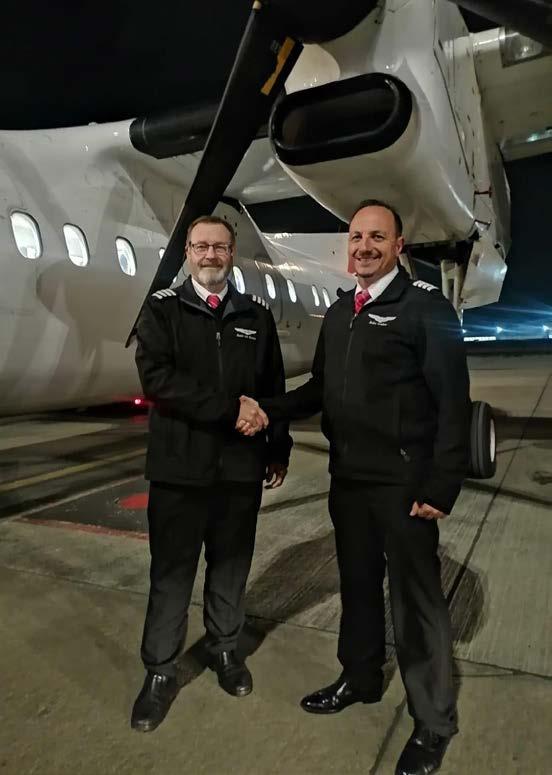
Felix Gosher (R) has had a long and difficult road to career success, yet has poured his heart into aviation, having been the driving force behind the many Childrens (and Elders) Flights. He has now been promoted to Captain by Cemair. Here he is being congratulated by Training Captain Fanie van Rooyen.

AIRCRAFT & HELICOPTER FINANCING
STRUCTURED AIRCRAFT LEASING SOLUTIONS
ENGINE & AVIONICS UPGRADE FINANCE
BRIDGING FINANCE
ENGINE OVERHAUL FINANCING
REFINANCING
DEALER FINANCING
RYAN FORRESTER
Ryan@airfincorp.co.za
+27 [0]82 890 6962
JASON SEYMOUR
Jason@airfincorp.co.za
+27 [0]82 326 0147
THOMAS JARDINE
Thomas@airfincorp.co.za
+27 [0]60 983 7056
JACO PIETERSEN
Jaco@airfincorp.co.za
+27 [0]82 672 2262
OLIVER STRATFORD
Oliver@airfincorp.co.za
+27 [0]83 326 9408



In place of the original Lycoming, two RV builders and RV supremo Robin Coss, supported by engine manufacturer Continental, installed a CD-155 diesel engine on a Van’s RV-9. Their aim was to counter the gradual disappearance of Avgas 100LL.

THIS project was a godsend for Continental, who presented the aircraft at Aero 2025 in Friedrichshafen after it was flown to England from South Africa.
South Africans Dennis Parker and Gordon Bramire assembled a Van’s RV-9 kit with the aim of replacing the original Lycoming with a Continental CD-155 diesel. The diesel powered RV made the journey from South Africa to the AERO expo in Friedrichshafen where it was on display at Continental Aerospace Technologies.
“ZU-IXF, our Continental CD-155-powered RV-9A, took to the skies in Cape Town in January 2023,” explains Dennis Parker, who continues: “Gordon Blamire, my business partner, has extensive experience flying Continental diesel engines with Piper PA-28s at the flying school, and we have both flown RV-7 and RV-9 variants with Lycomings. It was Gordon’s idea in 2017 to combine the Continental engine with the RV-9.”
The two builders started from the idea that the Jet-A1 is available almost everywhere, whereas the Avgas 100LL will be less and less so. They visited Continental’s centre in Germany to adapt the engine to the RV-9.
The challenge of the Continental engine is its weight. It weighs 38.5 kg more than a Lycoming O-320 and, to keep the centre of gravity within limits, the battery and some of the avionics had to be moved rearwards.
The result has exceeded expectations. “The RV-9 climbs at 1,400 fpm
and cruises at 163 kts at 10,000 ft, burning 7.8 US gallons per hour (26.4 l/h). At 75% power, we see 154 knots burning 6 US gph (22.6 l/h),” Dennis Parker says.
Supported by the engine manufacturer, their next project will be to mount a Continental CD-170 on an RV-14.
In addition to showcasing the Jet-A CD-155 that has been integrated into the Van’s RV-9, Continental is currently commemorating its 120th anniversary, a significant milestone that represents more than a century of powering legacies forward.
Continental has also expanded its training programme to include local Avgas educational opportunities in South Africa as part of its dedication to customers. Level 1 and Level 2 engine courses will be held in Johannesburg, South Africa, from 8 to 19 September 2025..
In order to guarantee that mechanics and operators in the area have Avgas and Jet-A piston engine guidance, Continental also has a Territory Support Representative in South Africa. Marius Voges brings years of general aviation experience and is available to support customers via phone +27 66 299 1012 and email: mvoges@continental.aero.
To learn more about the CD-155 engine and Continental’s advanced training program, visit: www.continental.aero
To learn more about integrating the CD-155 into your RV-9, visit: https://rv9d.com

Continental® Jet-A retrofit kits have landed. Three crates with hundreds of benefits. From lower operational costs to significantly reduced CO2 emissions and reduced pilot workload. Whether you want newer technology, easier or greener flying, or just want a simple way to save, talk to Continental® and unpack the positives of Jet-A.
The numbers speak for themselves.

































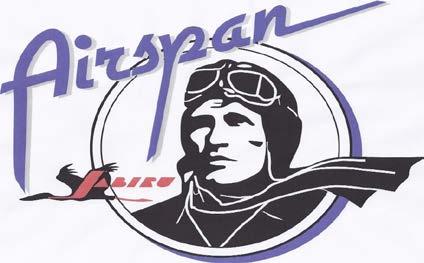
AIRSPAN EXECUTIVE AIRPORT, a dynamic, young, registered airport, just east of Rustenburg, NW. A tarred, lighted 900m runway, helipads, aprons, 1000+ people venue, restaurant, bar, accommodation. Extending the runway (1100m), registering a PPL school, building hangers, storage units, and an AMO. Looking forward to all fly-ins (no landing fees)!
Contact details: Renzia: 082 432 9228 / 083 229 5746, Fanie: 083 651 2254
Email: Airspan.fbf@gmail.com

Brits Flying Club, Founded in 1952, Brits Flying Club is one of South Africa's most respected aviation clubs, producing world-class aviators. Home to Springbok colours, we've nurtured champions. Located at FABS, our 900m asphalt runway (02/20) supports top aviation. Join us in honouring our rich heritage! Telephone: 012 255 0155
E-Mail: info@britsflyingclub.co.za Website: britsflyingclub.co.za

FABB is located central in the Ekurhuleni, close to OR Tambo. It houses various Flight Schools and AMOs, and has a lit 1440m runway. Jet-A1 and Avgas are available.
The clubhouse has a restaurant, lounge, pub, DSTV, outside braai area, pool, kids play area, and ablution facilities for overnight stays.
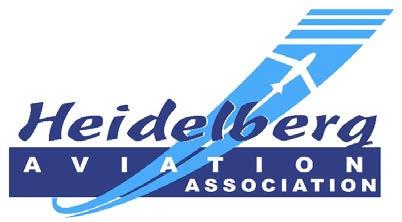
Fuel on airfield Avgas & Jet A1
FAHG 125.9
Contact – Andre Vorster +27 83 654 2793
Mail: Andre Vorster: andre@poxytech.co.za

Fuel on airfield Avgas & Jet A1
FAHG 125.9
Contact –Andre Vorster
+27 83 654 2793
Mail: Andre Vorster: andre@poxytech. co.za

NPL/PPL Training Centre - SACAA accredited (SACAA1177ATO) NPL Part 62 and PPL Part 61 ATO in Ladysmith KZN (FALY) and we have been in business since 2009. Avgas sales are also available at FALY.
Contact Larry: +27 83 788 2704

Himeville airfield is the gateway to Underberg and the southern Drakensberg surrounds. Sani Pass, Hiking, camping fishing, MTB biking, running trails, paddling the list of activities is long. Loads of accommodation options available
Co-ordinates: S29"44.9 E029"30.2
Runway: 05/23 900m grass
Frequency: 124.8
Contact:
Jayson van Schalkwyk +27 82 322 5722

Orient Airfield FAOI
S26°02’24” E027°35’42”
Situated 45km WNW of Johannesburg, the airfield features a 1.4km main runway, 36-18, 5100ft ASL. Training is provided in Gliders and TMG’s up to GPL level. The TMG’s are available for cost effective hour building for CPL and PPL Pilots.
Contact: http://mgc.org.za
OWN YOUR SLICE OF SKY AT TEDDERFIELD AIRPARK!
Ditch the rent and land your dreams at our fly-in community! Secure your hangar or stand in a buzzing aviation hub with epic facilities, security, SLING Aircraft, and a like-minded crew of aviators. SPACE IS LIMITED. INVEST NOW! https://tedderfield.co.za/home TedderfieldAirpark.co.za or contact Alan or Nic on +27 83 702 3680 or +27 82 900 4299.
FABB is located central in the Ekurhuleni, close to OR Tambo. It houses various Flight Schools and AMOs, and has a lit 1440m runway. Jet-A1 and Avgas are available.
The clubhouse has a restaurant, lounge, pub, DSTV, outside braai area, pool, kids play area, and ablution facilities for overnight stays.
208 Aviation Ben Esterhuizen +27 83 744 3412 / 83 820 1513 ben@208aviation.co.za info@208aviation.co.za www.208aviation.com
A1A Flight Examiner (Loutzavia)
Jannie Loutzis 012 567 6775 / 082 416 4069 jannie@loutzavia.co.za www.loutzavia.co.za
AES (Cape Town)
Erwin Erasmus 082 494 3722 erwin@aeroelectrical.co.za www.aeroelectrical.co.za
AES (Johannesburg)
Danie van Wyk 011 701 3200 office@aeroelectrical.co.za www.aeroelectrical.co.za
Aerocolour cc
Alfred Maraun 082 775 9720 www.aeroeng@iafrica.com
Aero Engineering & PowerPlant
Andre Labuschagne 012 543 0948 www.aerocolour@telkomsa.net
Aerokits
Jean Crous 072 6716 240 aerokits99@gmail.com
Aeronav Academy Donald O’Connor 011 701 3862 info@aeronav.co.za www.aeronav.co.za
Aeronautical Aviation Clinton Carroll 011 659 1033 / 083 459 6279 clinton@aeronautical.co.za www.aeronautical.co.za
Aerospace Electroplating
Oliver Trollope 011 827 7535 petasus@mweb.co.za
Aerotel Martin den Dunnen 087 6556 737 reservations@aerotel.co.za www.aerotel.co.za
Aerotric
Richard Small 083 488 4535 aerotric@aol.com
Aviation Rebuilders cc Lyn Jones 011 827 2491 / 082 872 4117 lyn@aviationrebuilders.com www.aviationrebuilders.com
AVIC International Flight Academy (AIFA) Theo Erasmus 082 776 8883 rassie@aifa.co.za
Air 2000 (Pty) Ltd
Anne Gaines-Burrill 011 659 2449 - AH 082 770 2480 Fax 086 460 5501 air2000@global.co.za www.hunterssupport.com
Aircraft Finance Corporation & Leasing
Jaco Pietersen +27 [0]82 672 2262 jaco@airfincorp.co.za
Jason Seymour +27 [0]82 326 0147 jason@airfincorp.co.za www.airfincorp.co.za
Aircraft General Spares
Eric or Hayley 084 587 6414 or 067 154 2147 eric@acgs.co.za or hayley@acgs.co.za www.acgs.co.za
Aircraft Maintenance International Pine Pienaar 083 305 0605 gm@aminternational.co.za
Aircraft Maintenance International Wonderboom Thomas Nel 082 444 7996 admin@aminternational.co.za
Air Line Pilots’ Association
Sonia Ferreira 011 394 5310 alpagm@iafrica.com www.alpa.co.za
Airshift Aircraft Sales
Eugene du Plessis 082 800 3094 eugene@airshift.co.za www.airshift.co.za
Alclad Sheetmetal Services
Ed Knibbs 083 251 4601 ed@alclad.co.za www.alclad.co.za
Algoa Flying Club
Sharon Mugridge 041 581 3274 info@algoafc.co.za www.algoafc.co.za
Alpi Aviation SA Dale De Klerk 082 556 3592 dale@alpiaviation.co.za www.alpiaviation.co.za
Apco (Ptyd) Ltd Tony/Henk + 27 12 543 0775 apcosupport@mweb.co.za www.apcosa.co.za
Ardent Aviation Consultants
Yolanda Vermeulen 082 784 0510 yolanda@ardentaviation.co.za www.ardentaviation.co.za
Ascend Aviation
Marlo Kruyswijk 079 511 0080 marlo@ascendaviation.co.za www.ascendaviation.co.za
Atlas Aviation Lubricants
Steve Cloete 011 917 4220 Fax: 011 917 2100 sales.aviation@atlasoil.co.za www.atlasaviation.co.za
AVDEX (Pty) Ltd
Tania Botes 011 954 15364 info@avdex.co.za www.avdex.co.za
Aviatech Flight Academy
Nico Smith 082 303 1124 viatechfakr@gmail.com www.aviatech.co.za
Aviation Direct
Andrea Antel 011 465 2669 info@aviationdirect.co.za www.aviationdirect.co.za
Avtech
Riekert Stroh 082 749 9256 avtech1208@gmail.com
BAC Aviation AMO 115
Micky Joss 035 797 3610 monicad@bacmaintenance.co.za
Blackhawk Africa
Cisca de Lange 083 514 8532 cisca@blackhawk.aero www.blackhawk.aero
Blue Chip Flight School
Henk Kraaij 012 543 3050 bluechip@bluechip-avia.co.za www.bluechipflightschool.co.za
Border Aviation Club & Flight School
Liz Gous 043 736 6181 admin@borderaviation.co.za www.borderaviation.co.za
Bona Bona Game Lodge
MJ Ernst 082 075 3541 mj@bonabona.co.za www.bonabona.co.za
Breytech Aviation cc 012 567 3139 Willie Breytenbach admin@breytech.co.za
Celeste Sani Pak & Inflight Products
Steve Harris 011 452 2456 admin@chemline.co.za www.chemline.co.za
Cape Town Flying Club Beverley Combrink 021 934 0257 / 082 821 9013 info@capetownflyingclub.co.za www.capetownflyingclub.co.za
Cape Town Flight Training Centre
Frans 021 976 7053 admin@cape-town-flying.co.za www.cape-town-flying.co.za
Capital Air
Tanya Vinagre 011 827 0335 / 083 928 7265 tanya@capitalairsa.com www.capitalairsa.com
Century Avionics cc Carin van Zyl 011 701 3244 sales@centuryavionics.co.za www.centuryavionics.co.za
Chemetall
Wayne Claassens 011 914 2500 wayne.claassens@basf.com www.chemetall.com
Chem-Line Aviation & Celeste Products
Steve Harris 011 452 2456 sales@chemline.co.za www.chemline.co.za
Clifton Electronics cc CJ Clifton / Irene Clifton 079 568 7205 / 082 926 8482 clive.iclifton@gmail.com
Comair Flight Services (Pty) Ltd Reception +27 11 540 7640/FAX: +27 11 252 9334 hello@flycfs.com www.flycfs.com
Cornerstone Advisory Services Aviation Personal Risk Protection Sharon Muller 082 941 4018 sharon.muller@liblink.co.za
Corporate-Aviators/Affordable Jet Sales Mike Helm 082 442 6239 corporate-aviators@iafrica.com www.corporate-aviators.com
CSA Aviation – Cirrus South Africa Alex Smith 011 701 3835 alexs@cirrussa.co.za www.cirrussa.co.za
C. W. Price & Co Kelvin L. Price 011 805 4720 cwp@cwprice.co.za www.cwprice.co.za
Dart Aeronautical Pieter Viljoen 011 827 0371 pieterviljoen@dartaero.co.za www.dartaero.co.za
Dart Aircraft Electrical Mathew Joubert 011 827 0371 Dartaircraftelectrical@gmail.com www.dartaero.co.za
Diepkloof Aircraft Maintenance cc Nick Kleinhans 083 454 6366 diepkloofamo@gmail.com
DJA Aviation Insurance 011 463 5550 0800Flying mail@dja-aviation.co.za www.dja-aviation.co.za
Dynamic Propellers Andries Visser 011 824 5057 082 445 4496 andries@dynamicpropeller.co.za www.dynamicpropellers.co.za
Eagle Flight Academy Mr D. J. Lubbe 082 557 6429 training@eagleflight.co.za www.eagleflight.co.za
Execujet Africa 011 516 2300 enquiries@execujet.co.za www.execujet.com
Federal Air Rachel Muir 011 395 9000 shuttle@fedair.com www.fedair.com
Ferry Flights int.inc. Michael (Mick) Schittenhelm 082 442 6239 ferryflights@ferry-flights.com www.ferry-flights.com
F Gomes Upholsters
Carla de Lima 083 602 5658 delimaCarla92@gmail.com
Fireblade Aviation 010 595 3920 info@firebladeaviation.com www.firebladeaviation.com
Flight Training College Cornell Morton 044 876 9055 ftc@flighttrainning.co.za www.flighttraining.co.za
Flight Training Services Amanda Pearce 011 805 9015/6 amanda@fts.co.za www.fts.co.za
Fly Jetstream Aviation Henk Kraaij 083 279 7853 charter@flyjetstream.co.za www.flyjetstream.co.za
Flying Unlimited Flight School (Pty) Ltd Riaan Struwig 082 653 7504 / 086 770 8376 riaan@ppg.co.za www.ppg.co.za
Flyonics (Pty) Ltd Michael Karaolis 010 109 9405 michael@flyonics.co.za www.flyonics.co.za
Gemair Andries Venter 011 701 2653 / 082 905 5760 andries@gemair.co.za
GIB Aviation Insurance Brokers Richard Turner 011 483 1212 aviation@gib.co.za www.gib.co.za
Guardian Air 011 701 3011 082 521 2394 ops@guardianair.co.za www.guardianair.co.za
Heli-Afrique cc Tino Conceicao 083 458 2172 tino.conceicao@heli-afrique.co.za
Henley Air Andre Coetzee 011 827 5503 andre@henleyair.co.za www.henleyair.co.za
Hover Dynamics Phillip Cope 074 231 2964 info@hover.co.za www.hover.co.za
Indigo Helicopters Gerhard Kleynhans 082 927 4031 / 086 528 4234 veroeschka@indigohelicopters.co.za www.indigohelicopters.co.za
IndigoSat South Africa - Aircraft Tracking Gareth Willers 08600 22 121 sales@indigosat.co.za www.indigosat.co.za
International Flight Clearances
Steve Wright 076 983 1089 (24 Hrs) flightops@flyifc.co.za www.flyifc.co.za
Investment Aircraft
Quinton Warne 082 806 5193 aviation@lantic.net www.investmentaircraft.com
Jabiru Aircraft
Len Alford 044 876 9991 / 044 876 9993 info@jabiru.co.za www.jabiru.co.za
Jim Davis Books
Jim Davis 072 188 6484 jim@border.co.za www.jimdavis.co.za
Joc Air T/A The Propeller Shop Aiden O’Mahony 011 701 3114 jocprop@iafrica.com
Johannesburg Flying Academy
Alan Stewart 083 702 3680 info@jhbflying.co.za www.jhbflying.co.za
Kishugu Aviation +27 13 741 6400 comms@kishugu.com www.kishugu.com/kishugu-aviation
Khubenker Energy (Pty) Ltd T/A Benveroy Vernon Bartlett 086 484 4296 vernon@khubenker.co.za www.khubenker.co.za
Kit Planes for Africa Stefan Coetzee 013 793 7013 info@saplanes.co.za www.saplanes.co.za
Kzn Aviation (Pty) Ltd
Melanie Jordaan 031 564 6215 mel@kznaviation.co.za www.kznaviation.co.za
Lanseria Aircraft Interiors
Francois Denton 011 659 1962 / 076 810 9751 francois@aircraftcompletions.co.za
Lanseria Flight Centre
Ian Dyson Tel: +27 11 312 5166, F: +27 11 312 5166 ian@flylfc.com www.flylfc.com
Lanseria International Airport
Mike Christoph 011 367 0300 mikec@lanseria.co.za www.lanseria.co.za
Leading Edge Aviation cc
Peter Jackson Tel 013 741 3654 Fax 013 741 1303 office@leaviation.co.za www.leadingedgeaviation.co.za
Legend Sky 083 860 5225 / 086 600 7285 info@legendssky.co.za www.legendsky.co.za
Litson & Associates (Pty) Ltd
OGP/BARS Auditing & Advisory Services & Aviation Safety Training
Email: Phone:enquiries@litson.co.za 27 (0) 8517187 www.litson.co.za
Litson & Associates Risk Management Services (Pty) Ltd
eSMS-S™/ eTENDER/ e-REPORT / Aviation Software Systems
Email: Phone:enquiries@litson.co.za 27 (0) 8517187 www.litson.co.za
Loutzavia Aircraft Sales
Henry Miles 082 966 0911 henry@loutzavia.co.za www.loutzavia.co.za
Loutzavia Flight Training
Gerhardt Botha 012 567 6775 ops@loutzavia.co.za www.loutzavia.co.za
Loutzavia-Pilots and Planes
Maria Loutzis 012 567 6775 maria@loutzavia.co.za www.pilotsnplanes.co.za
Loutzavia Rand
Frans Pretorius 011 824 3804 rand@loutzavia.co.za www@loutzavia.co.za
Lowveld Aero Club
Pugs Steyn 013 741 3636 Flynow@lac.co.za
Maverick Air Charters
Lourens Human 082 570 2743 ops@maverickair.co.za www.maverickair.co.za
MCC Aviation Pty Ltd
Claude Oberholzer 011 701 2332 info@flymcc.co.za www.flymcc.co.za
Mistral Aviation Services
Peter de Beer 083 208 7249 peter@mistral.co.za
MH Aviation Services (Pty) Ltd
Marc Pienaar 011 609 0123 / 082 940 5437 customerrelations@mhaviation.co.za www.mhaviation.co.za
M and N Acoustic Services cc Martin de Beer 012 689 2007/8 calservice@mweb.co.za
Metropolitan Aviation (Pty) Ltd
Gert Mouton 082 458 3736 herenbus@gmail.com
Money Aviation Angus Money 083 263 2934 angus@moneyaviation.co.za www.moneyaviation.co.za
Mont Blanc Financial Services
Devon Ford 0800 467 873 info@mbfs.co.za www.mbfs.co.za
MS Aviation Gary 082 563 9639 gary.templeton@msaviation.co.za
North East Avionics
Keith Robertson +27 13 741 2986 keith@northeastavionics.co.za deborah@northeastavionics.co.za www.northeastavionics.co.za
Orsmond Aviation 058 303 5261 info@orsmondaviation.co.za www.orsmondaviation.co.za
Owenair (Pty) Ltd
Clive Skinner 082 923 9580 clive.skinner@owenair.co.za www.owenwair.co.za
Par-Avion Exclusive Catering
Jakkie Vorster 011 701 2600 accounts@par-avion.co.za www.par-avion.co.za
PFERD-South Africa (Pty) Ltd
Hannes Nortman 011 230 4000 hannes.nortman@pferd.co.za www.pferd.com
Plane Maintenance Facility
Johan 083 300 3619 pmf@myconnection.co.za
Powered Flight Charters
Johanita Jacobs Tel 012 007 0244/Fax 0866 66 2077 info@poweredflight.co.za www.poweredflight.co.za
Powered Flight Training Centre
Johanita Jacobs Tel 012 007 0244/Fax 0866 66 2077 info@poweredflight.co.za www.poweredflight.co.za
Precision Aviation Services
Marnix Hulleman 012 543 0371 marnix@pasaviation.co.za www.pasaviation.co.za
Propeller Centre
Theuns du Toit +27 12 567 1689 / +27 71 362 5152 theuns@propcentre.co.za www.propcentre.com
Rainbow SkyReach (Pty) Ltd
Mike Gill 011 817 2298 Mike@fly-skyreach.com www.fly-skyreach.com
Rand Airport
Kevin van Zyl Kevin@horizonrisk.co.za +27 76 801 5639 www.randairport.co.za
Dr Rudi Britz Aviation Medical Clinic
Megan 066 177 7194 rudiavmed@gmail.com Wonderboom Airport
SAA Technical (SOC) Ltd SAAT Marketing 011 978 9993 satmarketing@flysaa.com www.flysaa.com/technical
SABRE Aircraft Richard Stubbs 083 655 0355 richardstubbs@mweb.co.za www.aircraftafrica.co.za
Savannah Helicopters
De 082Jager 444 1138 / 044 873 3288 dejager@savannahhelicopters.co.za www.savannahhelicopters.co.za
Scenic Air
Christa van Wyk +264 612 492 68 windhoek@scenic-air.com www.scenic-air.com
Sheltam Aviation Durban
Susan Ryan 083 505 4882 susanryan@sheltam.com www.sheltamaviation.com
Sheltam Aviation PE Brendan Booker 082 497 6565 brendanb@sheltam.com www.sheltamaviation.com
Signature Flight Support Cape Town
Alan Olivier 021 934 0350 cpt@signatureflight.co.za www.signatureaviation.com/locations/CPT
Signco (Pty Ltd)
Archie Kemp Tel 011 452 6857 Fax 086 504 5239 info@signco.zo.za www.signco.co.za
Skytrim
Rico Kruger +27 11 827 6638 rico@skytrim.co.za www.skytrim.co.za
SleepOver Michael Richardson 010 110 9900 michael.richardson@sleepover-za.com www.sleepover-za.com
Sling Aircraft Kim Bell-Cross 011 948 9898 sales@airplanefactory.co.za www.airplanefactory.co.za
Solenta Aviation (Pty Ltd)
Paul Hurst 011 707 4000 info@solenta.com www.solenta.com
Southern Energy Company (Pty) Ltd
Elke Bertram +264 8114 29958 johnnym@sec.com.na www.sec.com.na
Southern Rotorcraft cc Mr Reg Denysschen Tel no: 021 935 0980 execheli@iafrica.com www.rotors-r-us.com
Starlite Aero Sales
Klara Fouché +27 83 324 8530 / +27 31 571 6600 klaraf@starliteaviation.com www.starliteaviation.com
Starlite Aviation Operations
Trisha Andhee +27 82 660 3018/ +27 31 571 6600 trishaa@starliteaviation.com www.starliteaviation.com
Starlite Aviation Training Academy
Durban: +27 31 571 6600
Mossel Bay: +27 44 692 0006 train@starliteaviation.com www.starliteaviation.com
Status Aviation (Pty) Ltd
Richard Donian 074 587 5978 / 086 673 5266 info@statusaviation.co.za www.statusaviation.co.za
Superior Pilot Services
Liana Jansen van 0118050605/2247Rensburg info@superiorair.co.za www.superiorair.co.za
Swift Flite Linda Naidoo Tel 011 701 3298 Fax 011 701 3297 info@swiftflite.com / linda@swiftflite.com www.swiftflite.co.za
The Aviation Shop Karel Zaayman 010 020 1618 info@aviationshop.co.za www.aviationshop.co.za
The Copter Shop Bill Olmsted 082 454 8555 execheli@iafrica.com www.execheli.wixsite.com/the-copter-shop-sa
The Pilot Shop Helen Bosland 082 556 3729 helen@pilotshop.co.za www.pilotshop.co.za
Titan Helicopter Group 044 878 0453 info@titanhelicopters.com www.titanhelicopters.com
Top Flight Academy Nico Smith 082 303 1124 topflightklerksdorp@gmail.com
Turbo Prop Service Centre 011 701 3210 info@tpscsa.co.za www.tpscsa.co.za
Ultimax Aviation (Pty) Ltd Aristide Loumouamou +27 72 878 8786 aristide@ultimax-aviation.com www.ultimax-aviation.com
United Charter cc Jonathan Wolpe 083 270 8886 jonathan.wolpe@unitedcharter.co.za www.unitedcharter.co.za
United Flight Support Clinton Moodley/Jonathan Wolpe 076 813 7754 / 011 788 0813 ops@unitedflightsupported.com www.unitedflightsupport.com
Velocity Aviation Collin Pearson 011 659 2306 / 011 659 2334 collin@velocityaviation.co.za www.velocityaviation.co.za
Villa San Giovanni Luca Maiorana 012 111 8888 info@vsg.co.za www.vsg.co.za
Vortx Aviation Bredell Roux 072 480 0359 info@vortx.co.za www.vortxaviation.com
Wanafly Adrian Barry 082 493 9101 adrian@wanafly.net www.wanafly.co.za
Windhoek Flight Training Centre
Thinus Dreyer 0026 40 811284 180 pilots@flywftc.com www.flywftc.com
Wings n Things Colin Blanchard 011 701 3209 wendy@wingsnthings.co.za www.wingsnthings.co.za
Witbank Flight School Andre De Villiers 083 604 1718 andredv@lantic.net www.waaflyingclub.co.za
Wonderboom Airport Peet van Rensburg 012 567 1188/9 peet@wonderboomairport.co.za www.wonderboomairport.co.za
Zandspruit Bush & Aero Estate
Martin Den Dunnen 082 449 8895 martin@zandspruit.co.za www.zandspruit.co.za
Zebula Golf Estate & SPA Reservations 014 734 7700 reception@zebula.co.za www.zebula.co.za
We elevate the ar t of aviation design to new heights. Our innovative approach blends cutting- edge technology with timeless elegance, transforming aircraf t into personalized sanc tuaries of comfor t and style. From bespoke seating & advanced cabin layouts to exquisite liveries, we craf t ever y detail to ensure your journey is as ex traordinar y as your destination.

Liver y Design
Photorealistic 3D previews
Photography






Bespoke Aircraf t Completions









